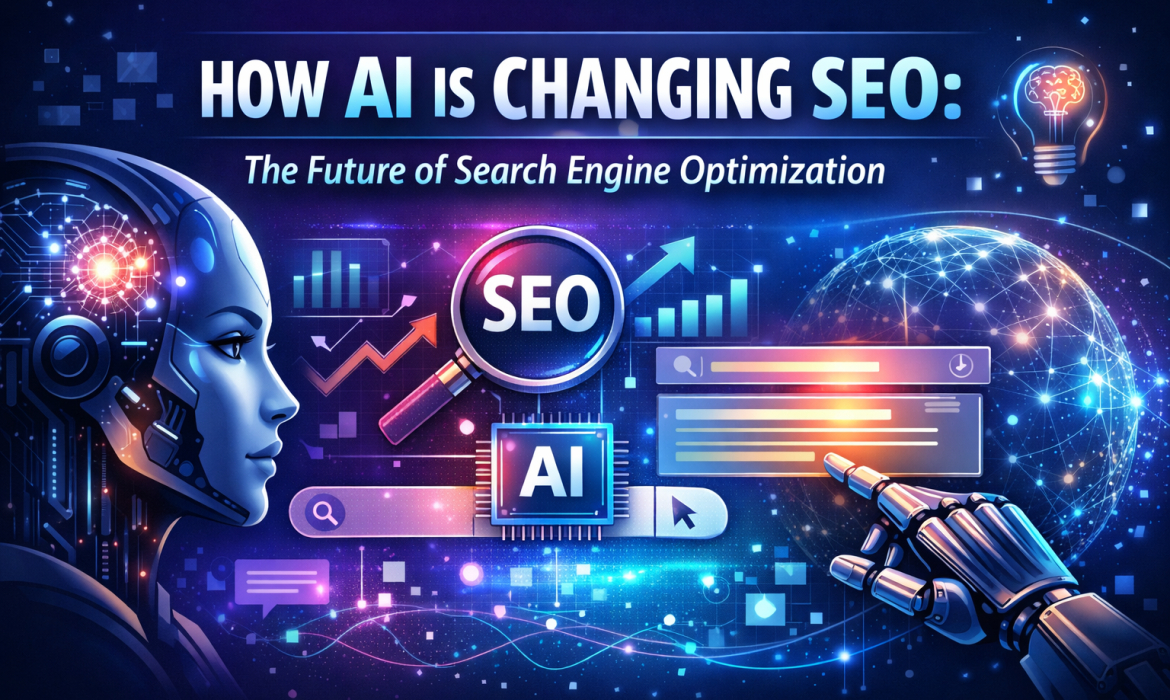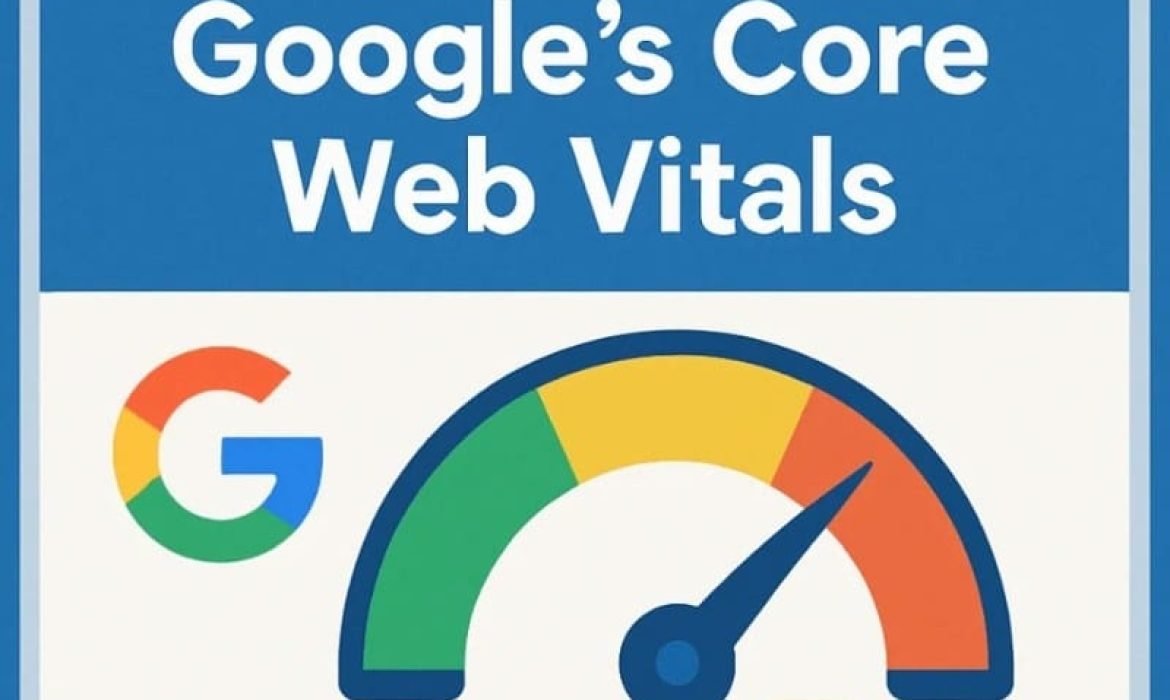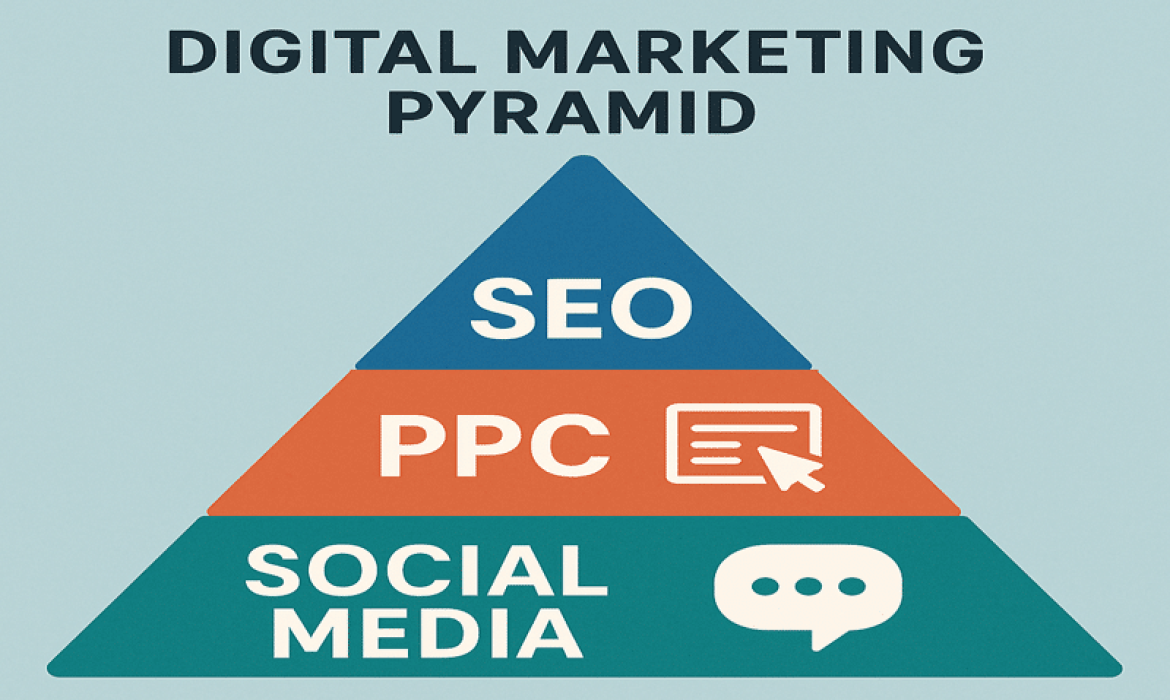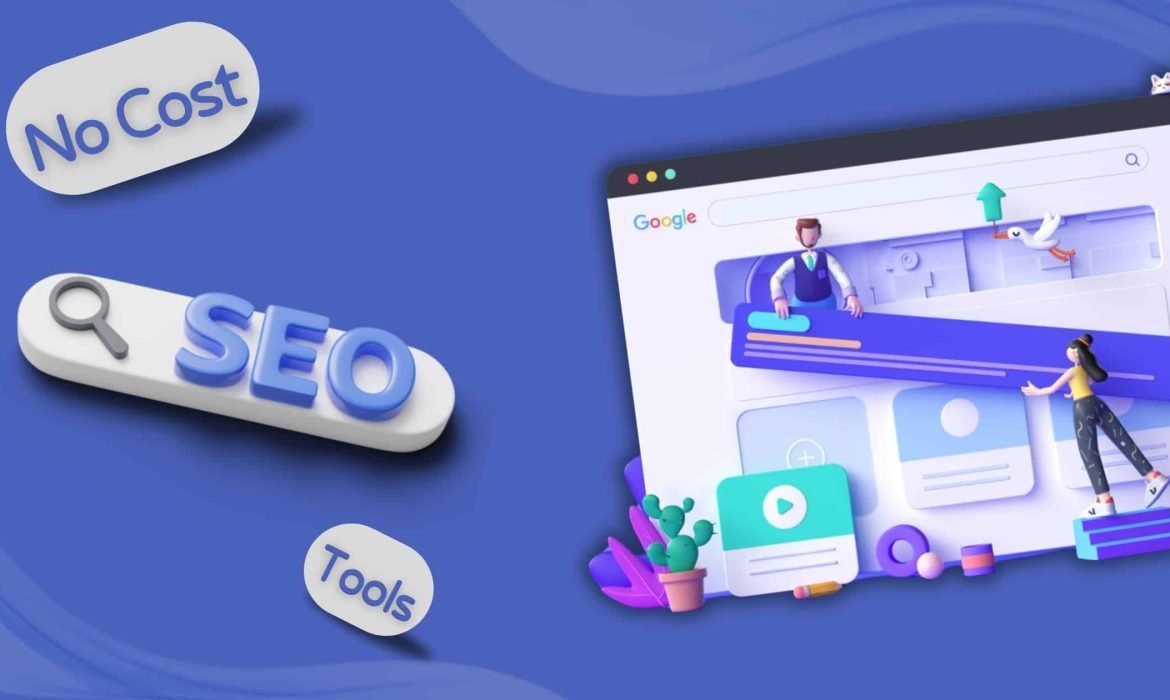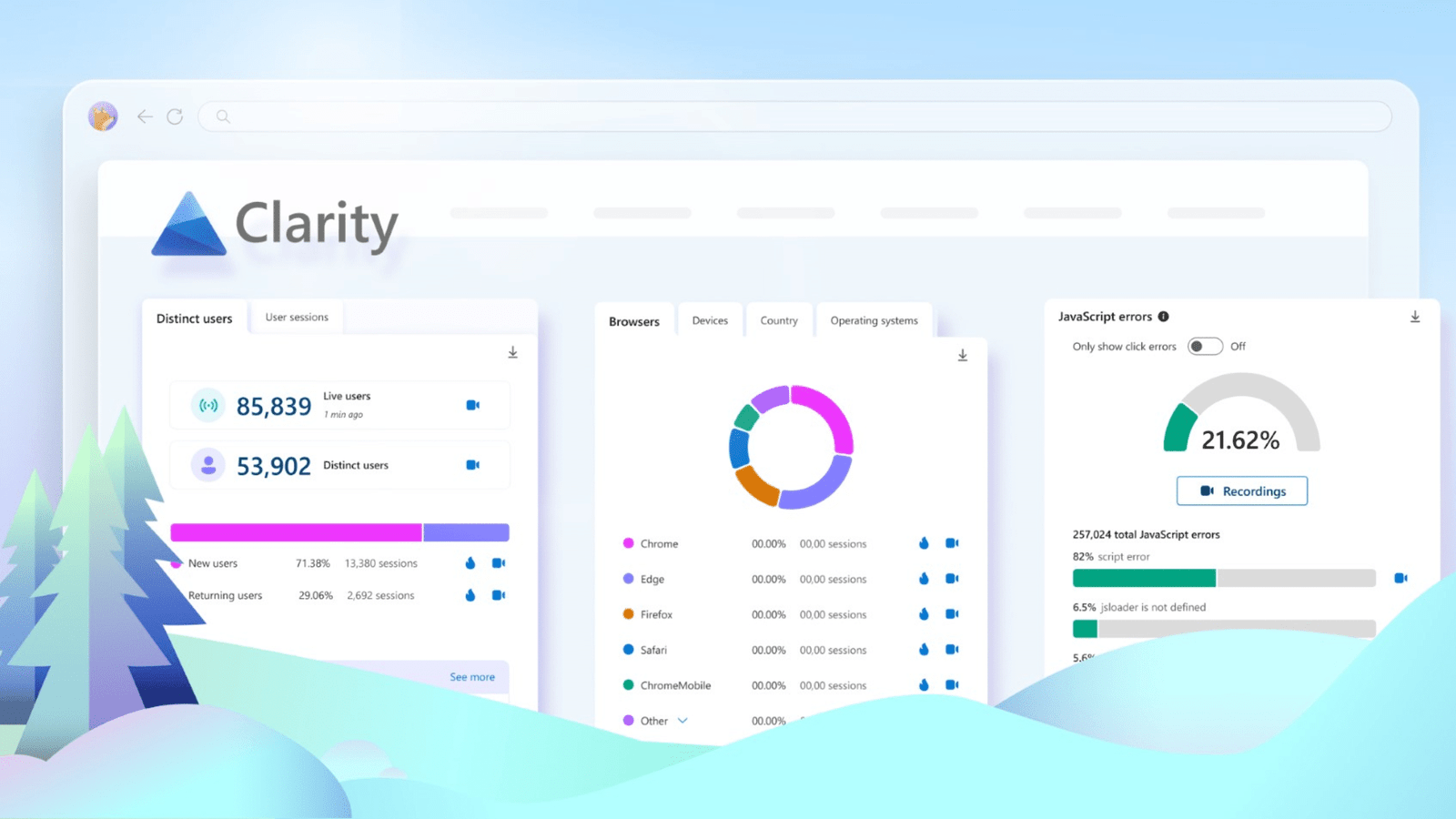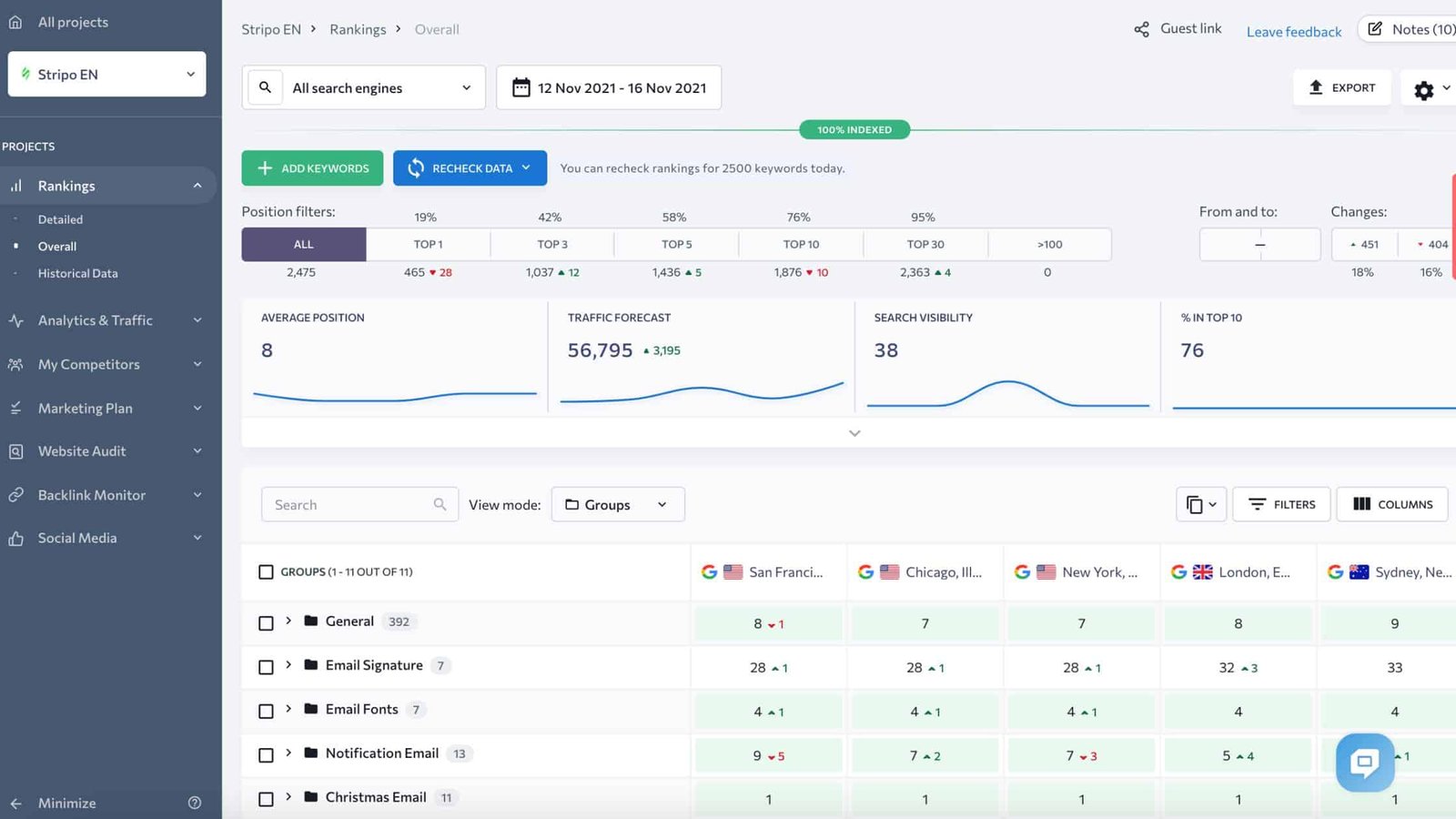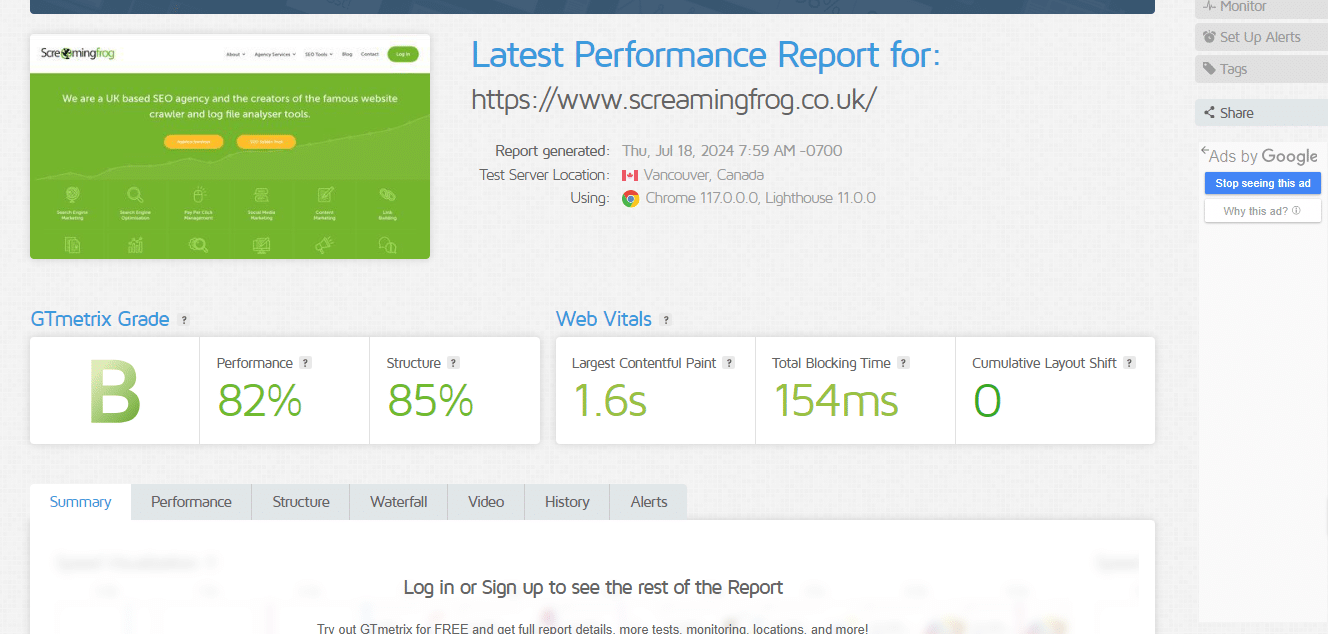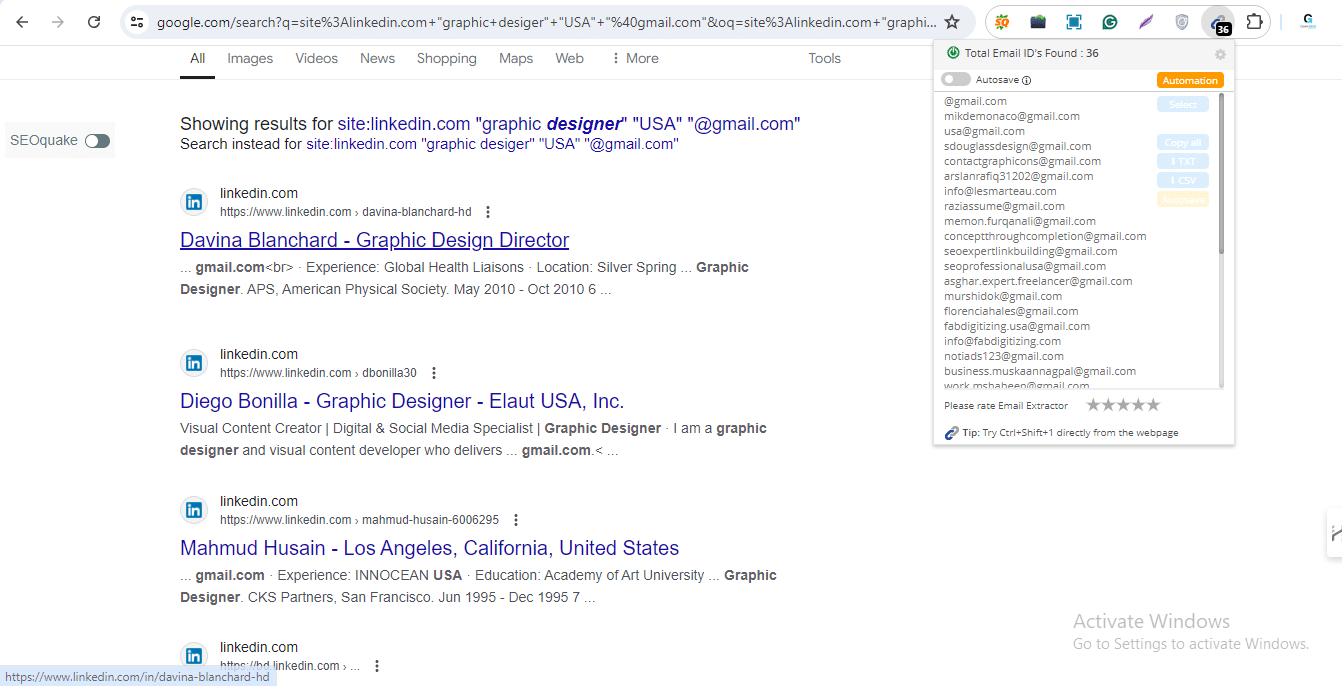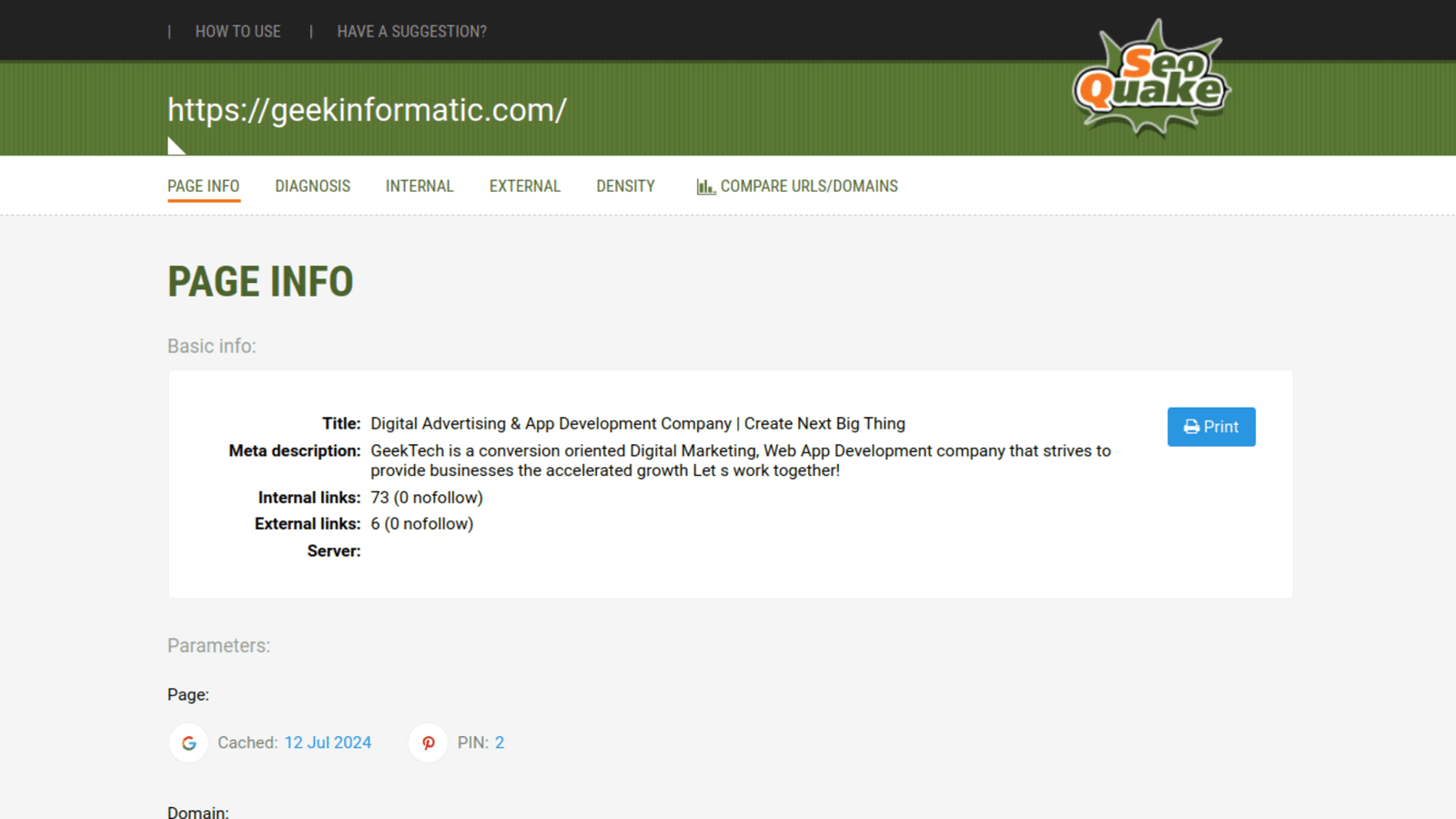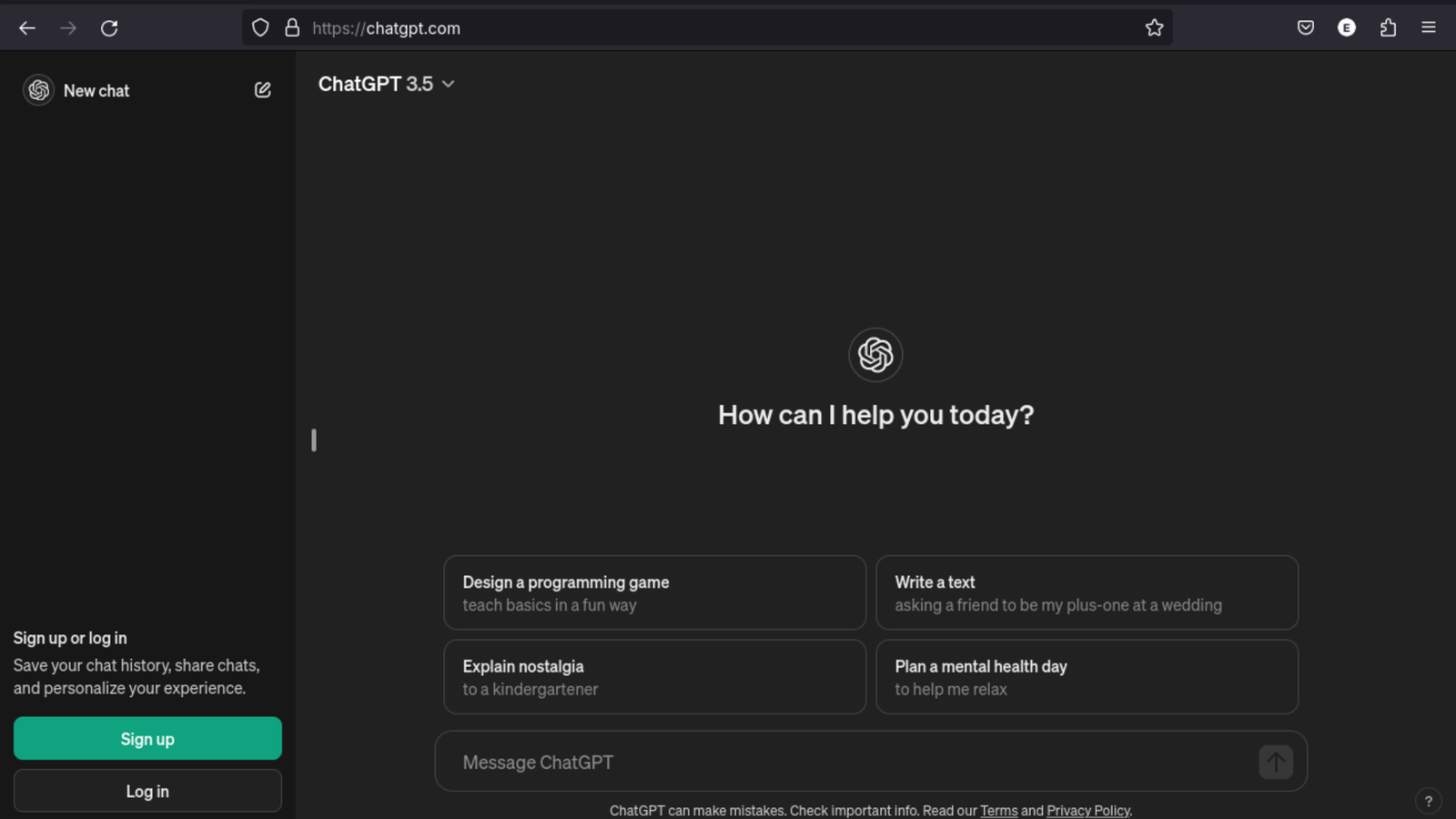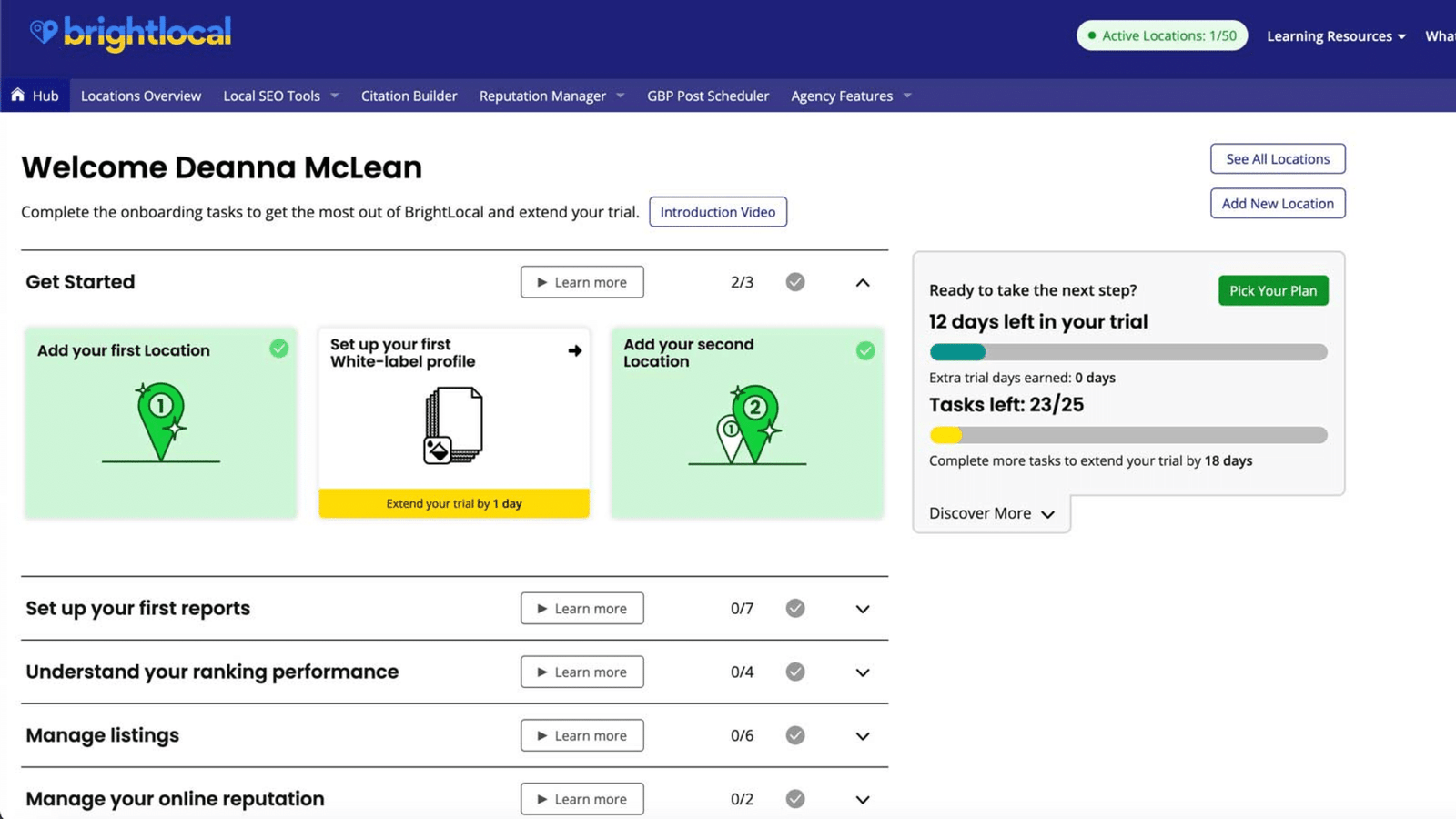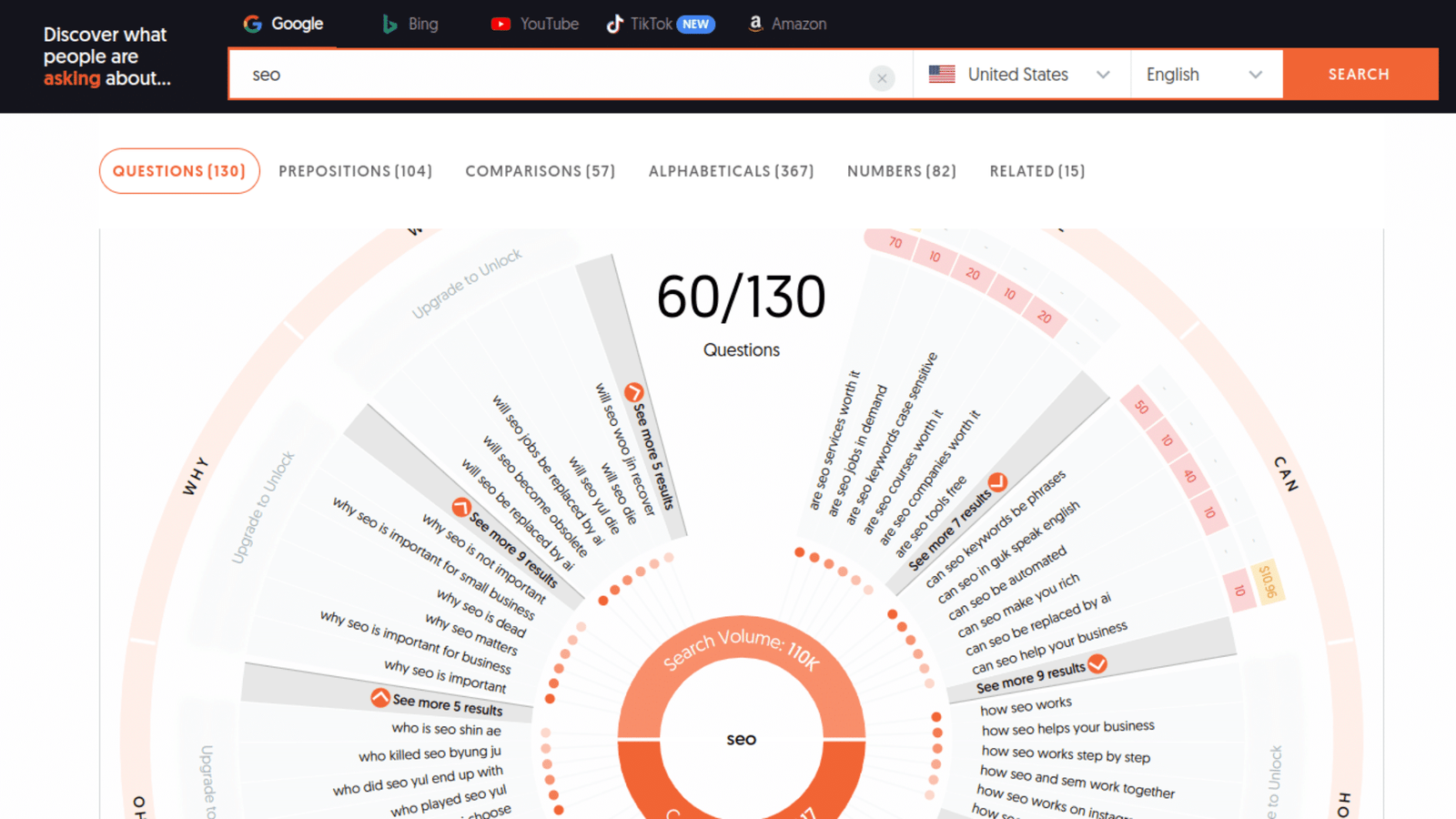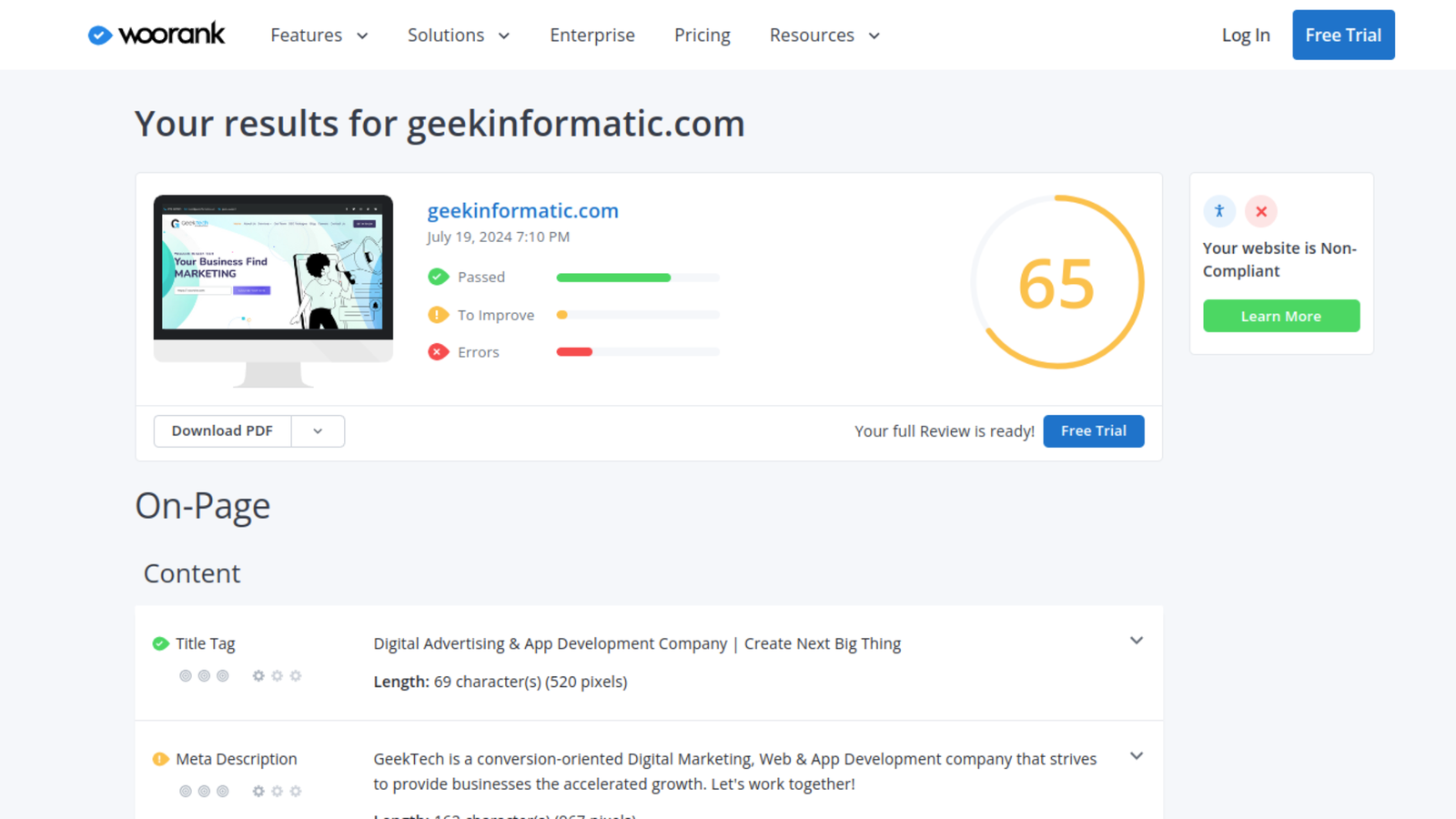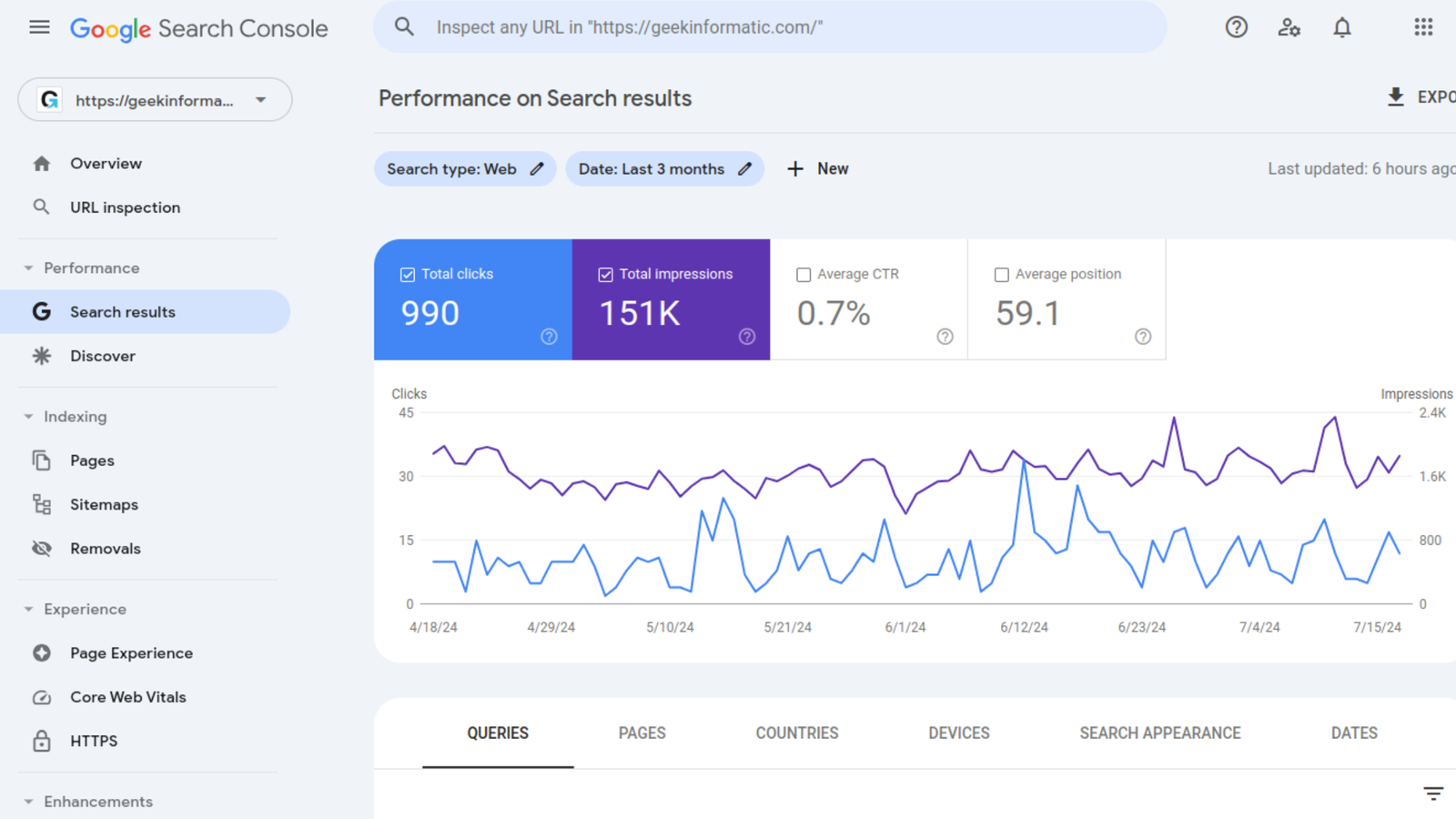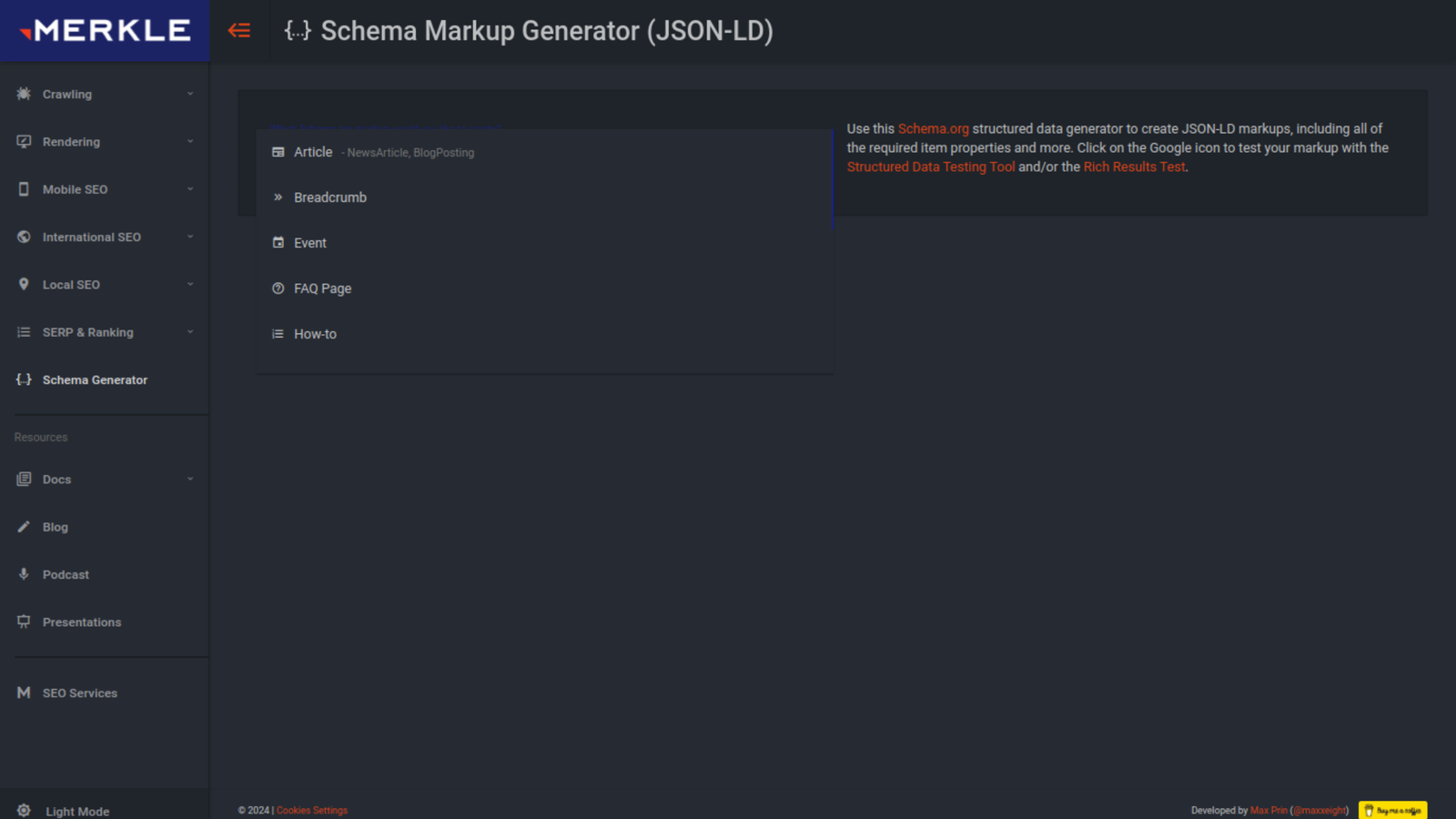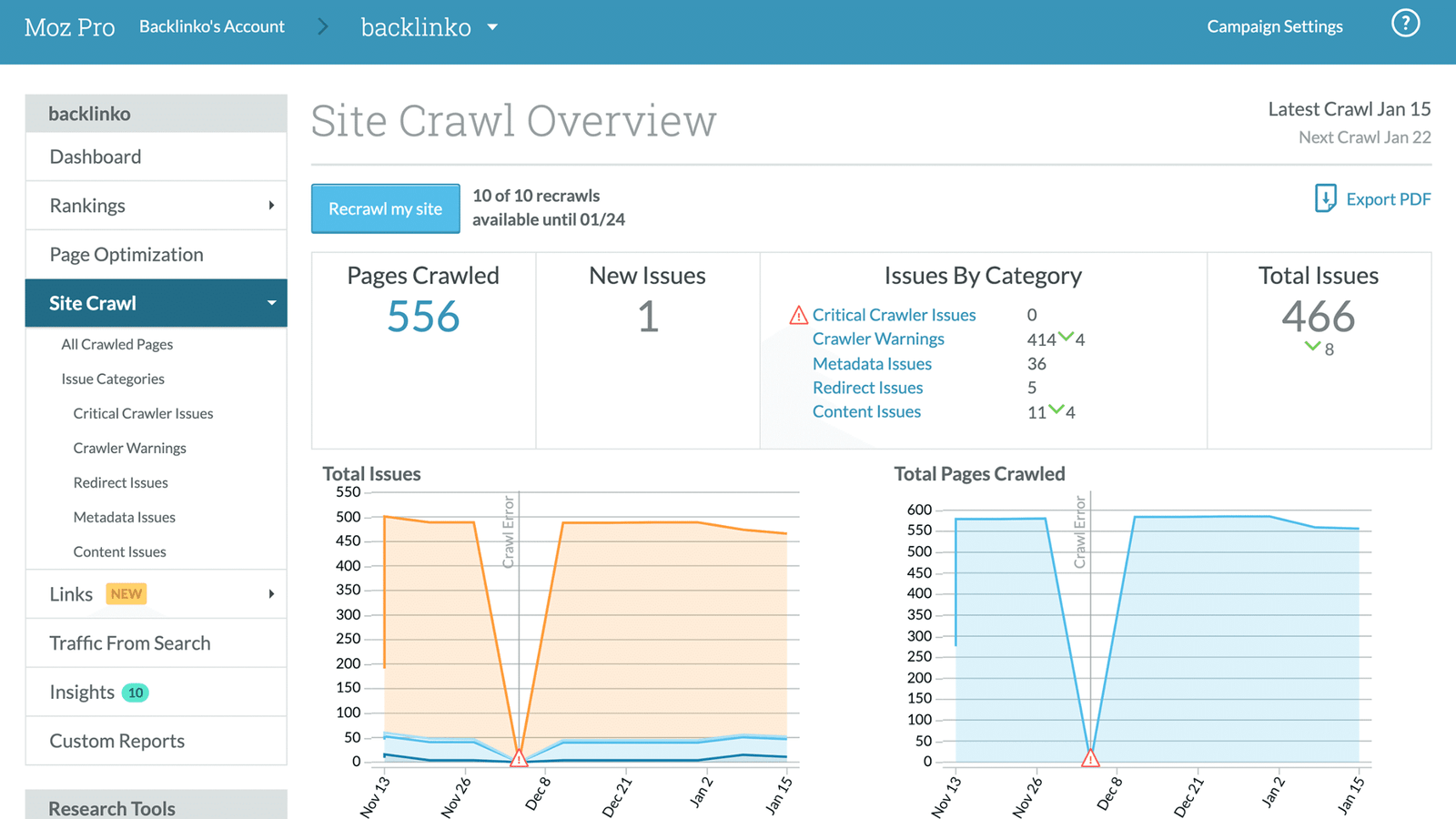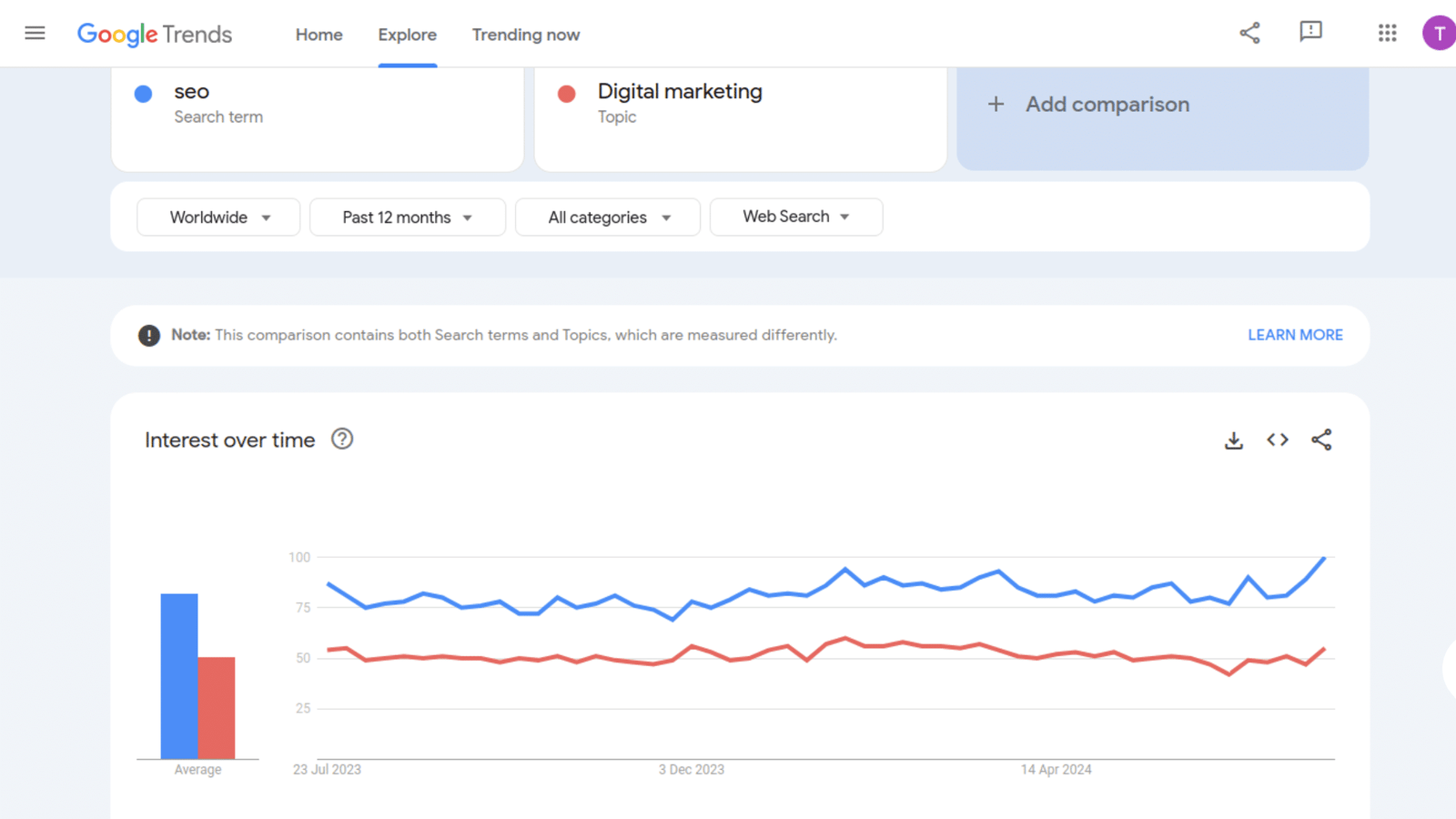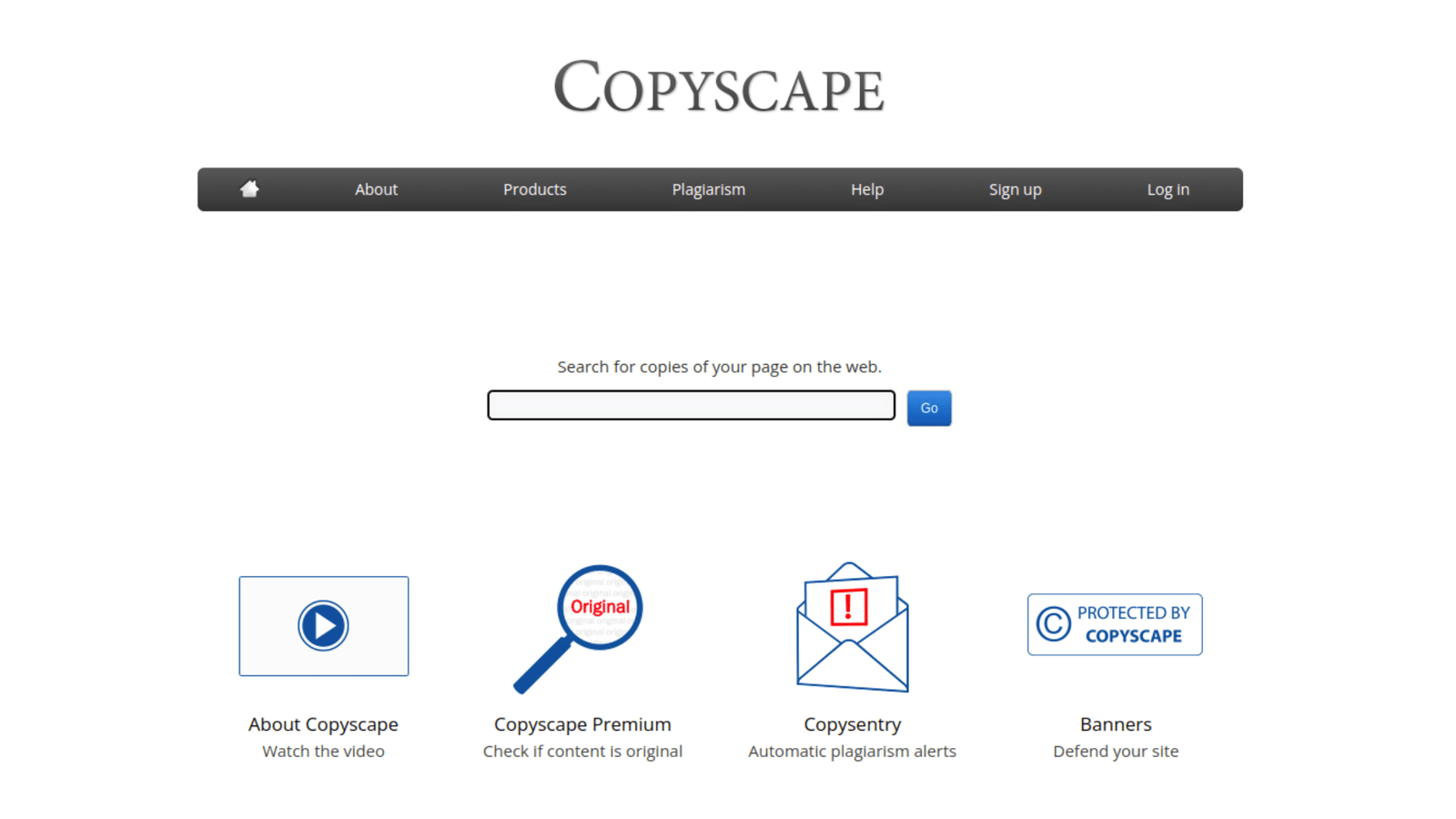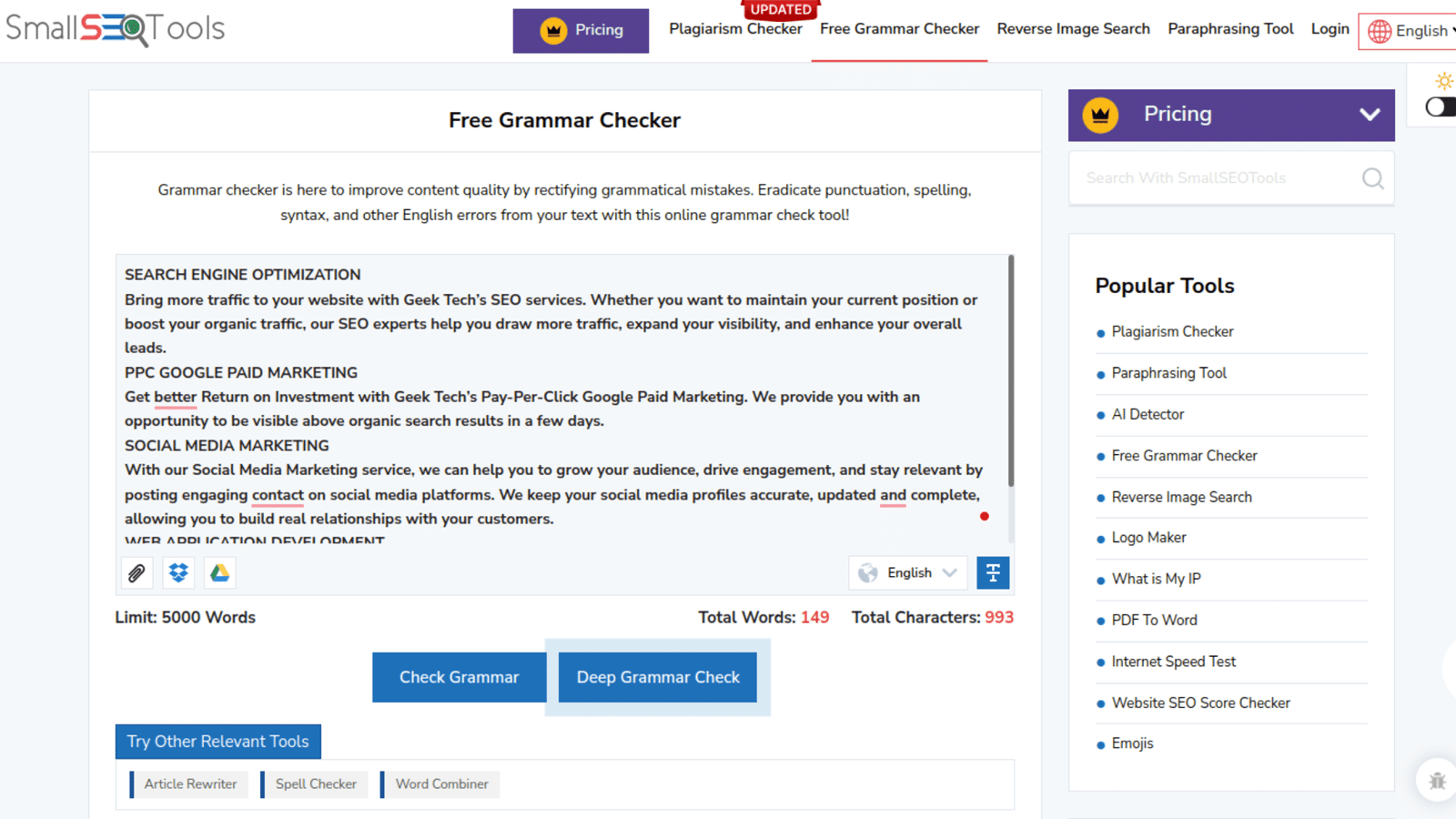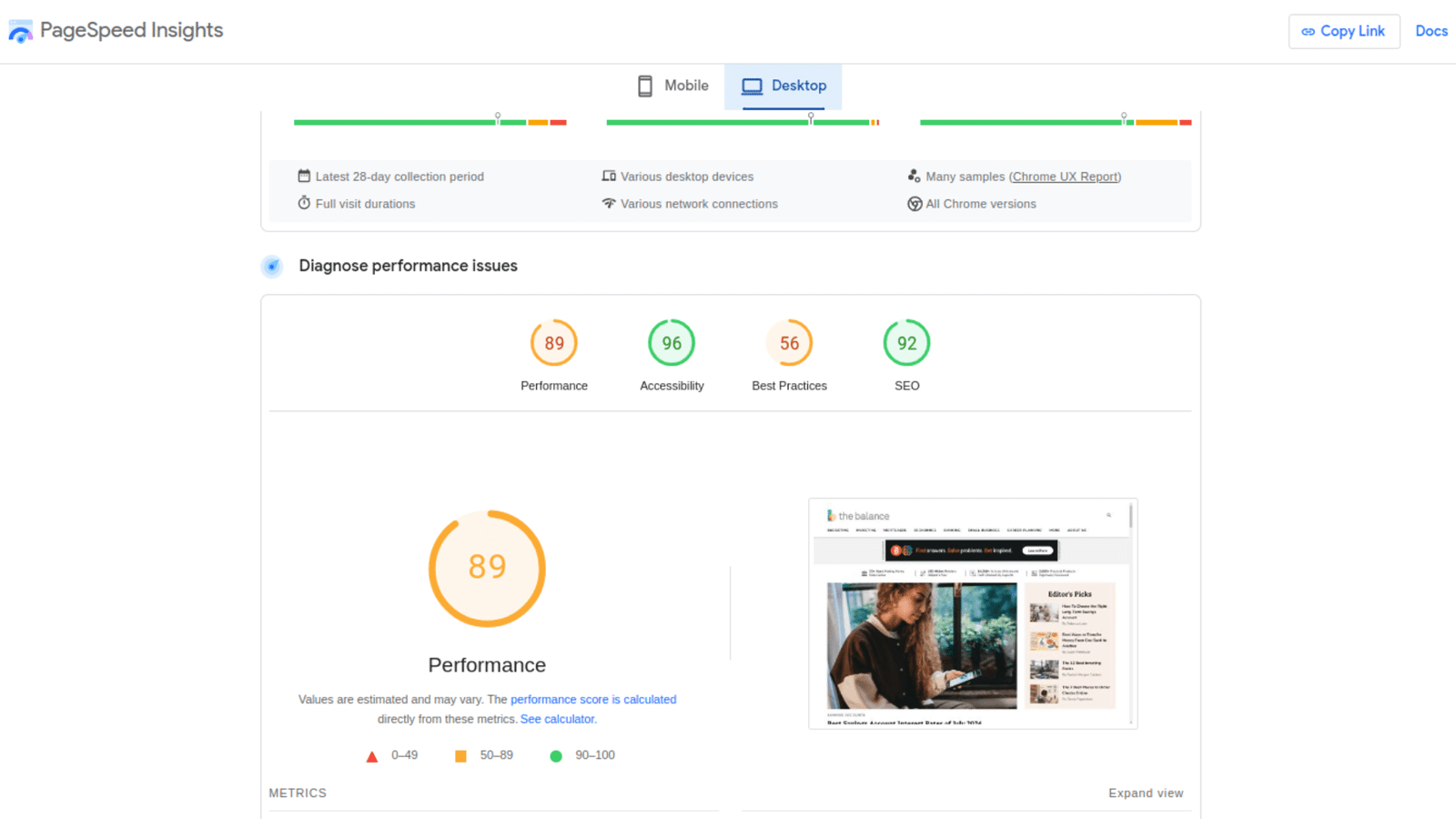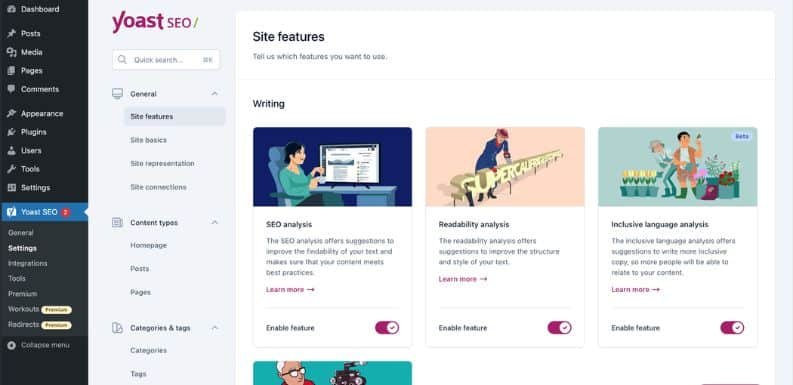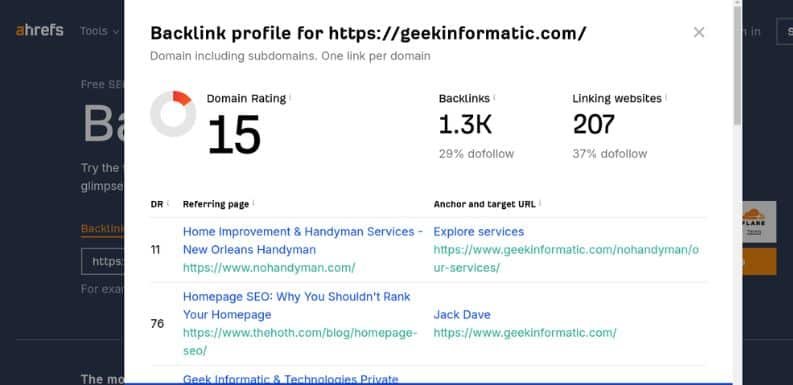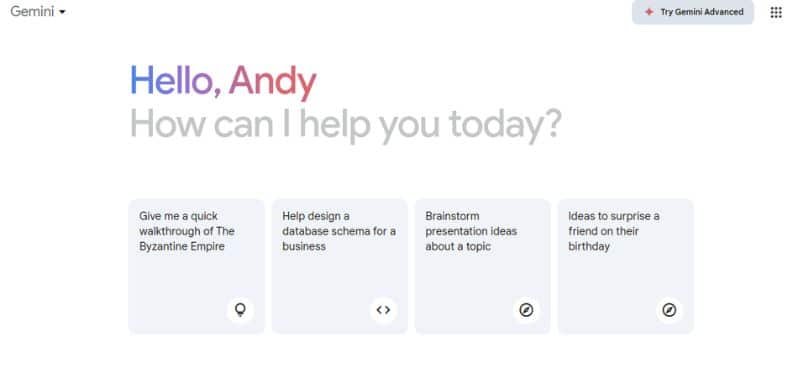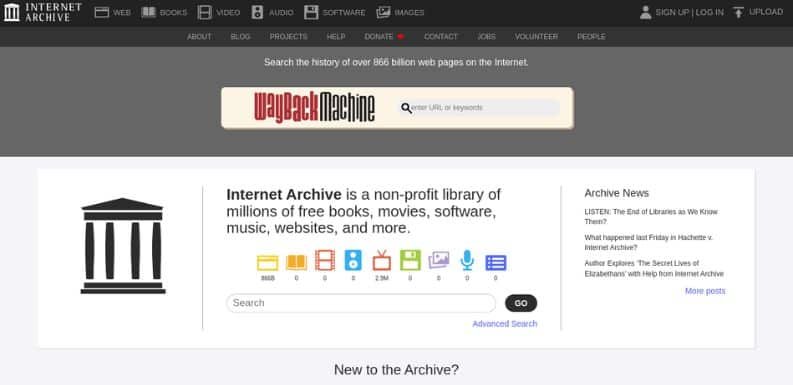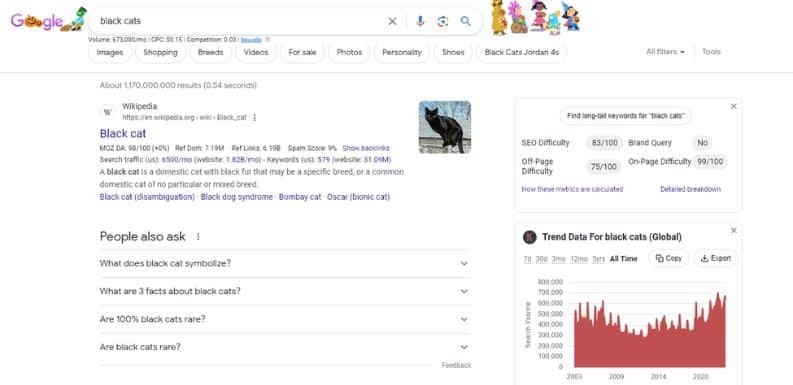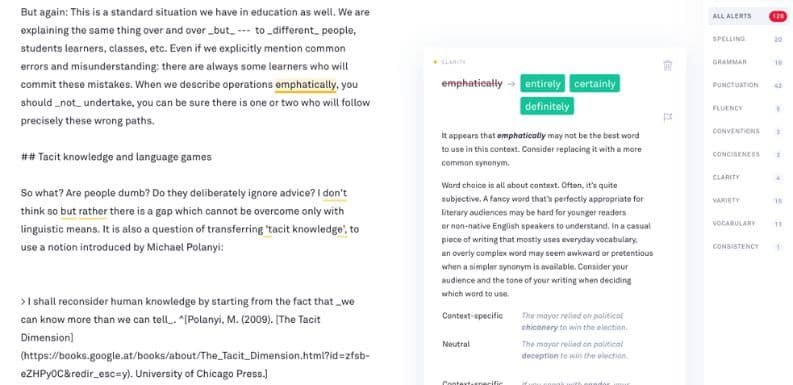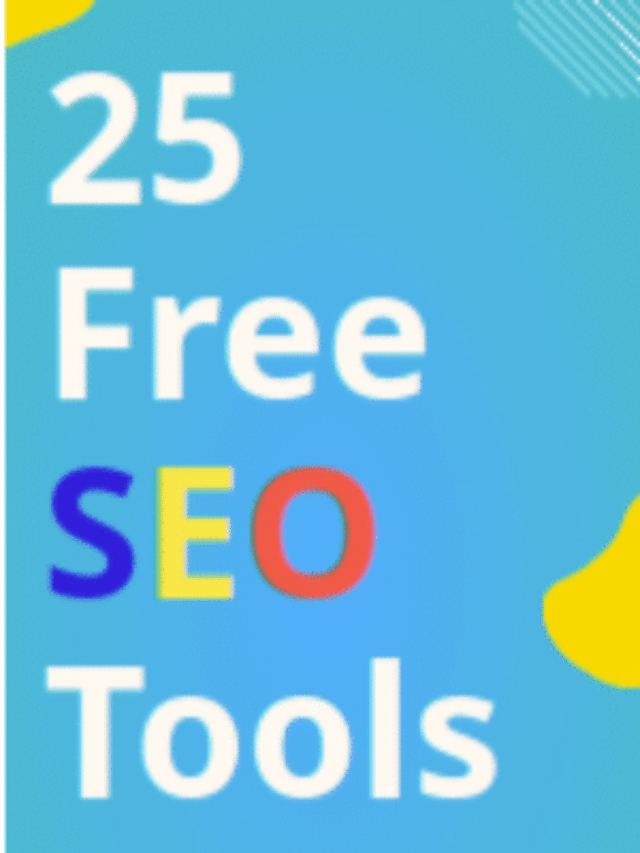How AI is Changing SEO: The Future of Search Engine Optimization
The search engine optimization process has evolved in the last few years. Artificial Intelligence makes this possible. Now, AI changes how SEO experts build strategies. Not only that, AI helps users find top search results. AI influences how search engines understand content. This shift affects every business that wants visibility online. This blog explores how AI reshapes SEO today. It also explains what the future of search looks like. Readers will gain practical insights and a clear path to stay ahead.
The Evolution of SEO in the Age of AI
SEO started as a simple practice. It helps websites rank with well-optimized content and the right keywords. Websites built basic backlinks, and here search engines followed basic rules.
The early systems were not that advanced. It did not understand the context. They did not understand the user goals and natural language. AI changed all of this.
-
From Keyword Stuffing to Intent Optimization
Search engines once relied on exact keyword matching. That method created unnatural content. It also created poor user experiences. AI helped search engines understand user intent.
Now, with AI, search engines read a full sentence and detect its meaning. AI-trained algorithms analyze patterns in millions of search queries. This made SEO more natural. It also made content quality far more important. Sites that answer real questions now perform better than sites that simply repeat phrases.
-
The Rise of Machine Learning in Search Engines
Google launched RankBrain. This change marked the rise of machine learning inside search. RankBrain learned from user behavior. It studied how people clicked and how long people stayed on a page. More importantly, it understands whether a page satisfied a need.
BERT and MUM followed RankBrain. These advanced systems read language like humans do. They understand nuance and context. These models connect ideas and link concepts across large blocks of text. They also allow search engines to interpret queries that humans phrase naturally. This makes SEO more advanced and more competitive.
How AI Is Transforming Modern SEO
AI influences every part of modern SEO. It changes the way content ranks and the way businesses research keywords. AI transforms how teams handle technical work. This development reshapes how companies find link opportunities. Additionally, with the help of AI SEO experts drives new habits and strategies.
-
AI-Powered Search Algorithms
AI algorithms analyze queries in depth. They detect meaning behind each word. Users get the most relevant pages because of these algorithms. Semantic search guides this process. It studies relationships between ideas and helps the engine predict what users want. This AI-powered algo engine delivers personalized results.
People see pages based on past behavior. They see pages based on search patterns. This creates a more accurate search experience. It also forces businesses to offer more helpful and original content.
-
AI in Content Creation and Optimization
AI tools assist writers and SEO teams. These tools analyze top-ranking content. They extract common structures. They recommend headings and highlight missing points. AI optimization helps writers understand what readers expect.
AI tools also improve readability and suggest smoother phrasing. These tools test clarity and also identify weak sections. Content creation with AI ensures a strong flow in every article.
-
AI for Technical SEO
Technical SEO once required manual auditing. Teams spent long hours on error checks. They looked for broken links and checked site speed. SEO experts also tested mobile performance and verified schema markup.
AI automates these tasks. AI tools crawl websites faster than humans. They detect issues instantly. They also make predictions about future technical risks. Some AI tools create schema markup with a single click. This saves time. It also ensures accurate search enhancements.
-
AI in Link Building and Digital PR
Link building takes time. It requires research and outreach. This also requires trust building. AI improves every step. AI identifies high-value prospects. AI checks domain authority.
Furthermore, AI scans content quality. AI predicts whether outreach will succeed. Companies save hours of work with AI. They also build stronger links. They reach better sites. They secure placements that help long-term performance.
-
AI and Voice Search Optimization
Voice search grows fast. People ask questions in natural language. They speak full sentences. They use a casual tone. AI helps search engines interpret these voice patterns. Voice search focuses on long tail queries. Voice search focuses on conversational answers.
Businesses must adapt. They must answer questions clearly. They must structure content for featured results. They must think about real speech patterns. AI makes this shift easier by analyzing how users talk and what they expect.
Benefits of Using AI for SEO Strategy
AI offers significant benefits to businesses. These benefits influence strategy. They influence workflow and performance.
-
Improved Efficiency and Reduced Costs
AI handles repetitive tasks. It automates keyword research. It automates technical audits. It automates competitor analysis. This saves time. It reduces labor costs. It allows teams to focus on creative strategies and high-value tasks.
-
Better Data Interpretation and Decision Making
SEO relies on data. AI systems read large data sets. They detect patterns faster than humans. They predict trends. They highlight opportunities. They warn about threats. This makes decision-making smarter. Teams build stronger strategies. They act early and stay competitive.
-
Consistent Content Production at Scale
AI helps teams produce content regularly. AI builds outlines. AI analyzes top pages. AI helps writers stay consistent. Teams use AI to scale production without losing quality. They create blogs. They create landing pages. They create guides. They maintain a steady publishing rhythm.
-
Enhanced User Experience Through Personalization
AI personalizes search. It matches users with pages that fit their interests. This pushes businesses to build personalized experiences. Websites must offer a clear structure. Websites must offer strong visuals. Websites must load fast. AI rewards pages that support user satisfaction. This creates a better user journey.
The Future of SEO in an AI-Driven World
SEO continues to evolve. AI will shape every stage of this evolution. Businesses must prepare.
-
Human AI Collaboration
The strongest results come from teams that combine AI strengths with human creativity. AI handles data. Humans handle insight. AI produces drafts. Humans refine tone. This partnership produces powerful outcomes. It becomes the new standard.
-
Increased Focus on Expertise, Experience, Authority, and Trust
Search engines value E E A T more than ever. AI systems highlight pages that show strong expertise. They look for human experience. They reward authority. They promote trustworthy content. Businesses must present credentials. They must include expert contributions. They must show transparency.
-
Predictive SEO and Real-Time Optimization
AI predicts trends. AI studies user behavior. AI adjusts strategies instantly. This creates predictive SEO. It allows businesses to act before competitors. It supports real-time optimization. Teams see what works. Teams fix issues quickly. Teams respond to user needs faster.
-
Greater Emphasis on Multimedia and Interactive Search
AI improves image search. AI improves video search. AI supports interactive experiences. Search engines highlight mixed media formats. Businesses must use visuals. They must use videos. They must offer tools and interactive elements. These elements support higher engagement and higher rankings.
Conclusion
AI changes SEO forever. It transforms how search engines work. AI is not just an assistant in SEO strategies, but also helps content rank. It changes how users interact with search. Businesses must adapt and use AI intelligently. They must combine AI with human insight. For better online visibility, businesses should focus on expertise and value. Meet Geek Informatic and Technologies Pvt. Ltd., SEO experts who help companies grow online. Contact them today. The future belongs to brands that understand the power of AI and embrace it with strategic thinking.
UX Meets SEO: How Great Web Design Can Skyrocket Your Search Rankings!
A few years ago, SEO used to be about keywords, backlinks, and cramming as many details as possible in a webpage. However, nowadays, everything is totally different. Google has become smarter, a lot smarter. It does not rank websites according to what is contained on the page only. It is now very keen to know how individuals are experiencing when they are on your site.
Here is the place where UX, or user experience, comes in.
SEO is not only about appearing in search results anymore, but it is also about satisfying the user when they open your site. When your site is slow, disoriented, or disorganized, the visitors will not be able to hang around. And guess what? Google notices.
That is the reason why UX and SEO are no longer distinct. They are the ideal couple, and when combined, your online site can rise to the top quicker than you would think.
What Is User Experience (UX) in Web Design?
To put it simply, UX refers to the ease, smoothness, and pleasure with which one may use your website. Imagine a case of entering a shop. When there is a sloppy aisle, difficult-to-read signs, and staff turning a deaf ear to you, you will just drop out. A website works the same way.
Content navigation is easy with good UX. Bad UX makes users bounce.
Key Elements of UX
- Page hierarchy and navigation: Do menus make sense?
- Visual readability: Can fonts be read? Are the colors comfortable to the eyes?
- Page speed: Can the site be loaded within one or two seconds?
- Interaction design: Can it be an easy tap or a click?
- Mobile experience: Is the site resized to all screen sizes?
- Accessibility: Is it easy to navigate for all users who have not been given special attention?
UX may sound like design-only, but it affects SEO in much larger ways than most individuals may realize.
How UX Directly Impacts SEO
1. User Engagement Signals
Google monitors user behavior on your site. And will they abide and venture or depart in a few seconds? Good UX helps visitors continue reading, clicking, and navigating, generating favorable indicators such as increased dwell time, reduced bounces, and increased pages per visit. These are cues that indicate that your site is worth something to Google.
- Page Speed and Core Web Vitals.
The Core Web Vitals at Google estimate the speed and stability of your site to users:
- LCP (Largest Contentful Paint) – the speed of the main content.
- FID (First Input Delay) – the responsiveness of the site.
- CLS (Cumulative Layout Shift) – the stability of the layout.
When your site loads slowly or vibrates, you lose in your rankings.
3. Mobile-Friendly Design
Google uses mobile-first indexing because most of the searches occur on mobile. In other words, when your mobile site is poor, your SEO is poor.
4. Clear Navigation Helps Google Crawl Better
In case your site structure is easy and sensible:
- Users find things quickly.
- Googlebot knows better what is on your pages.
- Your material is indexed and ranked quickly.
Why Good Web Design Improves Search Rankings
1. Makes life easier and generates leads
Good UX removes confusion. Visitors are well aware of what they need to click, what they need to read further, and how to proceed. This raises conversions, and satisfied users result in improved SEO.
2. Develops trust and credibility
Research indicates that users make their decisions about the credibility of websites in a few seconds. Instant trust is created by clear images, adequate spacing, and well-balanced colors. A reputable site is bound to receive repeat traffic, increased interaction, and referrals.
3. Favors improved content interaction
The best content would not work if the layout is a mess. Good UX is also characterized by brief paragraphs, unchallenging headings, bullet points, and neat spacing. This will assist the users in reading longer and more, further increasing rankings.
4. Enhances site architecture
Surprisingly orderly design enhances user experience. It also strengthens your internal linking process, as it can make Google perceive your content hierarchy.
UX Design Elements That Boost SEO
Fast, Lightweight Pages
To increase the speed of loading, compress images, cache, minify bulky scripts, and lazy load. Google has one of the largest ranking factors for speed.
Mobile-Responsive Layouts
Responsive design makes the text not small, makes it easy to tap buttons, and makes the menus clean and fit any screen. This will be critical to the success of SEO since mobile traffic is the dominant one.
Scannable Content Layouts
The most successful pages can be skimmed. Have descriptive headings, spacing, and paragraphs. This enables users (as well as Google) to know what your page is all about in a very short period of time.
Crystal-Clear Navigation
Menus should feel natural. Breadcrumbs assist the visitor in keeping track of his or her position. The less confusion = the longer the sessions, and the higher the rankings.
Visual Stability
Prevent non-advertising layout shifts, image loading delays, etc.
The stable designs enhance your Core Web Vitals score and maintain calm among the visitors.
Accessibility Enhancements
Basic changes, such as alt text, the appropriate color contrast, and readable fonts, not only assist more users but also enhance SEO activities.
How to Combine SEO Strategy With UX Design
Step 1 – Start With User Intent
Pay attention to the things that users search for and why. Each page is supposed to respond to a definite question.
Step 2 – Design a Clean, Conversion-Friendly Design.
Locate information in the expected place for the users. Minimize complications in CTAs.
Step 3 – Technical SEO Optimization + Core Web Vitals.
This involves optimization of the server, optimized media, and optimized JavaScript. The combination of them enhances UX and SEO.
Step 4 – Have SEO-Friendly Navigation.
Use simple URLs, internal links, and clear menus that allow the user to navigate through the pages.
Step 5 – Test the Experience on a regular basis.
Test heatmaps, A/B test, and study the real behavior of the users. Minor adjustments tend to yield major outcomes.
FAQs
Q: What is the impact of UX on SEO ranking?
A: The UX determines the duration of stay, ease of navigation, and speed with which your pages open. The engagement signals have direct impacts on rankings.
Q: What is the UX factor that matters the most regarding SEO?
A: The strongest ranking factors are currently speed and mobile friendliness.
Q: Will a redesign help me to increase my SEO?
A: Absolutely. A new design is better in terms of navigation, content, and speed, which are all key to ranking high.
Q: Is Google officially acknowledging that UX is important with regard to SEO?
A: Yes. The adoption of such features as the Core Web Vitals and mobile-first indexing indicates that UX has become part of SEO.
Q: How frequently do I need to refresh my website design?
A: Once every 2-3 years is recommended, or even earlier in case the user behavior or design trends change.
Conclusion
Keywords and backlinks are no longer important in SEO, but it is more about creating a site that people would like to use. Google rewards you by making you much more visible when your site loads fast, looks clean, is easy to navigate, and provides solutions to real user needs.
Simply put: Good UX = Better SEO = Higher Ranking.
Whether you are willing to create a website that is user-friendly and Google-like, the professionals at Geek Informatic and Technologies Pvt. Ltd. can assist you. We develop an effective, search engine-optimized design that will create tangible results.
Why HTTPS and Security Are Crucial for SEO in Modern Web Development!
Have you ever visited a site and noticed a horrific “Not Secure” notification on the address bar of your browser? Most likely, you shut the tab as fast as possible, regardless of the quality of the content or products. You’re not alone. Research indicates that the majority of the population would not input their information on a site that lacks the small padlock (HTTPS).
For businesses and web admins, it is a source of confusion: is HTTPS not used to make online payments? Or is it really important to SEO? The fact is that the concept of HTTPS is not only associated with credit card security. It is all about trust building, site optimization, and getting an advantage on Google search ranking. Security has become as significant as keywords or content in the form of search engine optimization in web development today.
Let’s explore why HTTPS is essential for SEO ranking.
What is HTTPS?
The Basics of HTTP vs. HTTPS
HTTP
The protocol is known as the Hypertext Transfer Protocol (HTTP), which is the standard for how information is exchanged between a site and a browser. However, with HTTP, data flows in plain text. It implies that any person who comes across the connection can extract sensitive information such as passwords or card numbers.
HTTPS:
In contrast, HTTPS is Hypertext Transfer Protocol Secure. It provides additional protection by encrypting data with the help of SSL (Secure Socket Layer) or TLS (Transport Layer Security).
HTTPS is Hypertext Transfer Protocol Secure. It provides additional protection by encrypting data with the help of SSL (Secure Socket Layer) or TLS (Transport Layer Security).How HTTPS Works
When an online site is encrypted with HTTPS, every single piece of information is encrypted in an unreadable code, whether it’s a password, an online form, or even an online payment. It can only be comprehended by the intended server and the browser.
Imagine you’re mailing a box rather than a postcard. Using HTTP, the postcard can be read by anybody. In the case of HTTPS, the box can only be opened by the recipient who has the correct key.
Why HTTPS Is a Google Ranking Factor?
Google’s Official Statement
In 2014, Google announced that HTTPS would be used as a ranking factor. The reasoning was relatively straightforward, Google is trying to redirect users to secure, reliable Web pages.
Since that time, secure sites have had a slight advantage in search ranking. And HTTPS is all you need to be at the top of the list, but it may be the reason you lag if your competitor is already there.
SEO Advantages of HTTPS
- Increased Rankings: A slight increase in the ranking can lead to a significant difference.
- Enhanced Visibility: HTTPS websites will not receive numerous warnings that deter users due to the “Not Secure” pop-up.
- Higher Click-Through Rates: When your users trust your site, they tend to be more willing to click and spend more time.
| Further Reading: Why Is URL Structure Still Crucial for SEO in 2025? |
Security Benefits of HTTPS Beyond SEO
Protecting User Data
As we are all aware, the number of cyberattacks is increasing daily. Hackers often target insecure websites to steal sensitive information. HTTPS also safeguards the user against man-in-the-middle attacks, where criminals intercept the communication between the user and the website.
Building User Trust
Imagine you have an e-commerce site in Chandigarh. Would the visitors take the risk of leaving payment information when they read “Not Secure” on the browser? Probably not. HTTPS will also give the customer the confidence that their data is secure.
Safeguard Business Reputation
Overnight, you can ruin your brand due to security breaches or warnings. A negative experience can be easily communicated through reviews and the internet. Through HTTPS, you not only secure your customers but also your image.
HTTPS and User Experience
Faster Page Speeds with HTTP/2
A well-known benefit of HTTPS is that it enables loading websites using a modern protocol, known as HTTP/2, which loads websites more quickly. Not only is speed beneficial, but it is also a factor that Google considers in its algorithm.
Reduced Bounce Rates
Users are quick to abandon websites that they do not trust. A safe site makes the visitors stay, interact, and even convert into customers, metrics that Google rewards.
Modern SEO and Security Go Hand-in-Hand
SEO Is Not Just Keywords Anymore
The conventional SEO was concerned with keyword stuffing. In modern SEO, it is all about the entire experience: speed, mobile-friendliness, and, of course, security.
Core Web Vitals and HTTPS
Google has adopted Core Web Vitals, a set of metrics that evaluate how quickly a site loads, its responsiveness, and the stability of its visual elements. These are supplemented with HTTPS, which provides safe, fast communication.
| Must Read: Google’s Core Web Vitals: What You Need to Know for SEO Success |
Local SEO and Security
For small businesses in cities like Chandigarh, Mohali, or other major global cities, establishing a reputable presence in local search is crucial. A safe site will result in the potential customers favoring you over others.
How to Switch from HTTP to HTTPS?
Step 1: Obtain an SSL Certificate
The first thing to do is to obtain an SSL certificate that will make your site use HTTPS. Free packages, such as “Let’s Encrypt,” are ideal for blogs or small sites, while big businesses can opt to pay for enhanced validation and support. Several hosting providers have begun to offer SSL as the default, making it easier to configure and implement.
Step 2: Implement HTTPS Site-Wide
Once installed, forward all HTTP pages to their HTTPS counterparts to ensure people and search engines do not get to insecure links. Update your internal links, sitemaps, and canonical tags to reflect the use of HTTPS. Also, be sure third-party scripts or resources are loaded securely so that they do not trigger browser warnings of mixed content.
Step 3: Inform Google
Lastly, refresh your site in Google Search Console and provide a new sitemap (using URLs with HTTPS). This facilitates the indexing of the secure form of your site by Google and also makes the transition easier in rankings.
Future of Web Security and SEO
The Rise of Zero-Trust Security
Firms are quickly moving towards zero-trust security models in which no user or connection is implicitly trusted, including when it is internal to the organization. All requests are thoroughly checked to ensure compliance with regulations.
In the case of websites, it implies that authentication will be stricter, access control will be enhanced, and that end-to-end encryption will become a matter of order. Early adaptation will enable businesses to gain a competitive advantage in terms of security and customer trust.
AI and Cybersecurity
Websites are more vulnerable than ever before, as hackers are relying on AI-driven vulnerability scanners and automating the process of attack. To counter this, AI is also being utilized by cybersecurity solutions to detect and prevent threats in real-time.
This is what implements HTTPS and other reasonable security practices by websites, even more urgently as the first line of defense.
FAQs
Does migrating to HTTPS negatively impact SEO rankings in the short term?
These variations may be temporary, resulting from search engines reindexing your site. However, HTTPS enhances positioning and confidence in the long run.
What is the benefit of HTTPS to small businesses in India?
Local users are suspicious of fake deals. A secure site, marked by the lock icon, immediately conveys credibility to your business.
Does the website security require only SSL?
No. SSL is essential, but secure hosting, firewalls, and regular software updates are also crucial.
What will happen if I do not change to HTTPS?
Your position can drop, users can be scared by warnings about “Not Secure” and your reputation can be damaged.
The Bottom Line!
Are you still using HTTP to run your site? It is high time to switch. It is one of the most effective and easiest actions you can perform concerning SEO and long-term business development.
At Geek Informatic & Technologies Pvt. Ltd., we specialize in assisting businesses to secure their websites and ensure maximum performance in terms of SEO. Whether you need an SSL certificate, a comprehensive security upgrade, or a complete digital marketing strategy, we’ll help keep your business competitive, secure, and visible online.
Google’s Core Web Vitals: What You Need to Know for SEO Success
When people visit your website, they expect it to load quickly and work smoothly. But if it does not give that experience, they often leave within seconds. So, to help site owners improve user experience, Google introduced Core Web Vitals.
Core Web Vitals are part of Google’s overall focus on user experience. They help determine where your site ranks in Google search. The better your scores, the better chance you have of ranking higher. There are three key indicators that show how fast and stable your site is when someone uses it.
In this blog, you will understand these three key indicators of Core Web Vitals. And how they help you in SEO success.
Everything You Should Know About the Three Core Web Vitals
The following information will help you to clearly understand the three Core Web Vitals:
1. Largest Contentful Paint (LCP)
The first performance metric of Core Web Vitals is Largest Contentful Paint (LCP). LCP measures how much time it takes for a webpage with large content to become visible to users. Here, it typically measures elements such as:
- Images (e.g., <img> tags)
- Video poster frames
- Background images loaded via CSS
- Large text blocks (e.g., headings, paragraphs)
It shows how soon visitors can see the main content after opening your page. And if it loads slowly, then users can get annoyed. They can leave the page before they even see the main content.
If it takes 4 seconds for the banner image to appear after someone opens your homepage, it can be frustrating. That means your LCP is too high.
That’s why Google recommends keeping LCP under 2.5 seconds after the page starts loading. A fast LCP gives users the feeling that your site is quick and ready to use.
How to Improve LCP for Better SEO:
- Optimize images: Large images take longer to load and can slow down your page. Use compressed and properly resized images without sacrificing quality. Consider using modern formats like WebP and serving responsive images for faster performance across all devices.
- Optimize CSS and JavaScript: Extra code can slow things down. Remove any code your page doesn’t actually use. You can also shrink (or “minify”) the code and move the most important styles to the top so they load first. This helps the main content show up faster.
- Optimize server response times: If your website’s server is slow, your page will be slow too. Use a reliable web host, clean up your database, and avoid unnecessary redirects. Using a CDN (Content Delivery Network) can also help deliver your content faster by using servers that are closer to your visitors.
- Reduce render-blocking resources: Sometimes, files like CSS or JavaScript get in the way of the content loading right away. You can delay or load them later so they don’t block the important stuff, like your banner image or headline, from showing up first.
COMMON TOOLS TO CHECK: PageSpeed Insights.
2. Interaction to Next Paint (INP)
The next is Interaction to Next Paint (INP). It tracks how long your site takes to respond when a visitor tries to interact with it. This includes actions like:
- Clicking a button,
- Choosing an item from a menu, or
- Filling out a form
To give users a smooth experience, your website’s Interaction to Next Paint (INP) should be 200 milliseconds or less.
For example, imagine someone taps the “Buy Now” button, but nothing happens for half a second. That delay is counted in your INP score. And also, if there’s a delay after the click or tap visitor can feel like the site is frozen or broken.
How to Improve INP for Better SEO:
- Reduce JavaScript Execution Time: Excessive JavaScript often makes your site lag behind user actions. One of the methods to do so is to divide the large scripts into smaller parts and eliminate the unused code.
- Avoid Long Tasks: If the browser is too busy with tasks such as animations or background processing that take too long, it can’t come back to the user to respond quickly to user input. Split the tasks up into teeny tiny chunks. It should take less than 50 milliseconds to make it feel snappy.
- Prioritize User Interactions: Make sure the code that handles user actions (like clicks or taps) runs as quickly as possible. Defer non-essential tasks so they don’t block interaction.
- Use Efficient Event Handlers: Avoid putting too much logic inside event listeners. Keep them simple so the browser can process them quickly when a user interacts with your site.
- Minimize Layout Shifts and Visual Jank: If elements move around after a user clicks something, it can delay feedback. Keep your layout stable and predictable.
COMMON TOOLS TO CHECK: PageSpeed Insights or Lighthouse.
3. Cumulative Layout Shift (CLS)
Cumulative Layout Shift (CLS) is a stable Core Web Vital metric. It’s an important, user-centric metric for measuring visual stability because it helps quantify how often users experience unexpected layout shifts. A low CLS helps ensure that the page is delightful.
CLS examines the proportion of movement of the layout of your site as it loads. You may have come across the pages in which images/ads move around as they load. This may make you press the wrong button or lose your flow in reading. That is aggravating and misleading to users.
Google recommends a CLS score of less than 0.1. A stable layout makes your page easier to use and more trustworthy.
How to Improve CLS for Better SEO:
- Always Set Size for Images and Videos: When inserting images, videos, or ads, be sure to specify their height and width in the code. This helps the browser estimate how large an area to allocate so that nothing jumps around when the page loads.
- Don’t Insert Content Above What’s Already Visible: Don’t create banners, popups, or ads at the top of the screen, which can interfere with the page loading process. This will push the content down and ruin the user experience.
- Use Fonts That Load Quickly: Sometimes, a font takes too long to load, and the text shifts when it finally appears. To fix this, use system fonts or fonts with a fallback to avoid visual jumps.
- Reserve Space for Ads or Dynamic Content: If your page has ads or embeds that appear after loading, reserve space for them in advance. This prevents the layout from shifting when those elements finally show up.
- Preload Fonts and Important Assets: Use the preload tag for important fonts and elements so they load faster and more smoothly — reducing unexpected layout movements.
COMMON TOOLS TO CHECK: PageSpeed Insights, Lighthouse or or Chrome DevTools.
Together, these three Core Web Vitals help you understand what your visitors see and feel when they use your site. Improving them can lead to better user satisfaction and stronger performance in search results.
Final Thoughts
Core Web Vitals have become a major constituent element in the ranking scheme employed by Google. They include the speed at which your content appears, the rate at which your content responds to clicks, and the responsiveness with which it loads. By optimizing these scores, you would be rendering your site friendly to people. That holds people on your page so that it counts more in search.
Connect with Industry Professionals
Partner with Geek Informatic & Technologies Pvt. Ltd. and make your site faster, reliable, and user-friendly. Our team will help you meet the Core Web Vitals through Google to ensure you stay top of the search results.
Breaking Down the Digital Marketing Pyramid: SEO, PPC, Social Media & Beyond
Digital marketing today is anything but one-dimensional. One strategy doesn’t cut it. One platform doesn’t carry the weight. One campaign doesn’t seal the deal. That’s where the idea of the digital marketing pyramid comes in. Think of it as a layered structure, with each level doing its job to support the next.
At the base, there’s SEO. Then comes PPC, followed by social media, email, and all the stuff that brings it all together. It’s not just a strategy — it’s a system. Let’s break this pyramid down piece by piece. You’ll see how each level helps businesses grow stronger, louder, and smarter online.
Everything Starts With a Solid SEO Foundation
Let’s start at the bottom — because that’s where it all begins. Search engine optimization, or SEO, is the backbone of digital marketing. It’s what gets your website found when people go searching. No tricks. Just visibility.
If your business isn’t showing up on Google, you’re invisible to a lot of potential customers. And SEO is how you fix that. But it’s not just throwing in a few keywords and hoping for the best.
Real SEO work involves:
- Researching what your audience is actually typing into Google
- Writing content that answers real questions
- Ensure your website loads fast and works on phones
- Getting other reputable websites to link back to you
There’s also technical stuff — like optimizing your site’s structure so Google can crawl and understand it. SEO doesn’t give you overnight results. But the payoff is long-term. Once your content ranks, it can keep bringing in traffic for months — even years.
That’s why SEO forms the base of the pyramid. You build here first. Everything else stacks on top.
PPC: When You Need Fast, Targeted Results
While SEO takes time, PPC is more like flipping a switch. Pay-per-click advertising lets you skip the line. You bid on selected keywords, and your ad appears right at the top of Google, even above the organic search results.
But here’s the catch — you pay for every click. That means your strategy needs to be tight. You don’t want to blow your budget on empty traffic. Every click should have a purpose.
Here’s what makes PPC powerful:
- You choose who sees your ads
- You control the daily budget
- You can test different headlines and offers
- You get instant data to see what’s working
Platforms, including Google Ads and Bing Ads, are popular. But PPC also lives on Facebook, Instagram, LinkedIn, and even YouTube.
PPC works best when paired with strong SEO. While SEO slowly builds trust with search engines, PPC gives you immediate visibility. It’s like planting seeds and watering them while also buying fresh fruit from the store — smart brands do both.
Social Media: The Middle of the Pyramid and the Heartbeat of the Brand
Now we move to the middle layer. The one that’s most public. Most dynamic. And often, the most misunderstood. Social media!
This isn’t just about posting pretty pictures or tweeting clever quotes. Social media is where brands go to build personality, create loyalty, and start real conversations.
Each platform has its own vibe. That matters.
- Instagram is all about visuals, reels, and lifestyle
- Facebook is where communities form
- Twitter (or X) is great for fast updates and reactions
- LinkedIn is for thought leadership and networking
- TikTok favors creativity and spontaneity
Social media isn’t about being everywhere. It’s about being where your audience actually spends their time.
The key to success?
- Post consistently (not constantly)
- Respond to comments and messages
- Use video — it performs better across all platforms
- Stay real and human (no one likes robotic content)
And here’s the truth — followers don’t equal customers. But engagement? That does. People support brands they feel connected to.
Social media puts a face to your business. It makes you relatable. And in today’s world, that counts more than ever.
Email Marketing: Quiet, Powerful, and Seriously Underused
Most people scroll past ads. They skip posts. But email? They check it. Daily. Sometimes hourly. That’s why email marketing is still one of the most reliable tools in digital marketing. And yet, so many businesses sleep on it.
Emails aren’t just for promotions. They’re for updates. News. Value. Here’s what a good email campaign should do:
- Provide something useful (a tip, an offer, a reminder)
- Be short and easy to read
- Looks good on phones
- Lead people to take action (click, reply, shop, sign up)
It’s not about blasting your list every day. It’s about showing up with relevance. Smart email strategies segment audiences. They personalize messages. And they deliver the right message at the right time. Done right, email builds relationships. And those relationships convert.
Influencer Marketing: Trust That Can’t Be Bought — But Can Be Shared
People trust people. Not ads. Not logos. Not corporations. That’s why influencer marketing is growing so fast. When people follow and share your product, it feels authentic.
But here’s the trick — don’t chase vanity numbers. A beauty influencer with 3 million followers won’t sell your tech gadget. But a niche creator with 30,000 loyal fans might.
Micro-influencers often have better engagement. Their audience is tighter, more trusting, and more likely to act.
To make influencer partnerships work:
- Find creators aligned with your brand
- Let them tell the story in their voice
- Avoid over-scripting the message
- Measure the impact (clicks, traffic, mentions)
This layer of the pyramid isn’t just about reach. It’s about trust. And trust is the hardest thing to buy online.
Data and Analytics: The Top Layer That Holds It Together
All of this means nothing if you don’t track what’s working. Analytics sits at the top of the pyramid — not because it’s the flashiest, but because it helps every other layer perform better.
Without data, you’re just guessing.
Use it to answer questions like:
- Which blog posts bring the most traffic?
- Which ad campaign converts the best?
- When do people open your emails?
- Where are your visitors coming from?
Tools like Google Analytics, Facebook Insights, and heatmaps help you see the real picture. But it’s not about drowning in numbers. Focus on the data that ties back to business goals.
Want more leads? Watch your conversion rate. Want brand awareness? Measure impressions and shares. Analytics closes the loop. It shows what to improve, what to cut, and what to double down on.
This Pyramid Doesn’t Stand Still
Here’s something no one tells you — this pyramid shifts. New platforms emerge. Old tactics die. Algorithms change. People change. That means your strategy needs to move, too.
What should you watch next?
- Voice search is picking up speed
- Short-form video is taking over
- AI-driven content tools are everywhere
- Customers expect faster, more personal experiences
You don’t need to chase every trend. But you do need to adapt and evolve. What worked six months ago might not work now. And that’s okay — the pyramid is flexible. That’s the point.
The Geek Tech Approach: Strategy That Builds Up, Not Out
At Geek Tech, digital marketing isn’t a guessing game. Our team believes in building from the ground up. Solid SEO. Smart PPC. Engaging social content. Powerful email campaigns. And always tracking the results.
We don’t use shortcuts. Our experts use real strategies that deliver real growth. If you’re serious about your digital presence, you need a team that understands every layer of this pyramid — and how to make it work for your business.
In The End
Here’s the truth. You can’t build a strong online presence on one tactic alone. Not anymore. The digital space is too loud, too fast, and too competitive. But when you build layer by layer, using strategies that actually talk to each other, that’s when the results start to show.
Strong SEO brings traffic. Smart PPC brings visibility. Relatable social content builds trust. Clear emails keep customers close. And data helps you improve it all. That’s the pyramid. And once you build it right, you won’t just be online — you’ll stand out.
Long-Form vs. Short-Form Content: What Works in 2025?
With technological advancements, the internet is gaining thousands of new users every day. Not only are users increasing, but marketers are also getting tough competition in numbers. Users are getting wide options and loads of content for their searches. However, with a lot of content options, users’ attention spans are also declining. Now, internet scrollers are more informed and expect valuable content from what they consume. This makes marketers think about their content and pushes them to deliver better content.
There are two types of content that are catching the eyes of users. And these are long-form content and short-form content. In this blog, we’ll compare both content types, explore their benefits, and help you decide what works best in 2025.
What is the content dilemma in 2025? Let’s find out
The foundation of digital marketing is always content. Be it a startup, an established brand, or a solo creator, the success of your online strategy depends a lot on the type of content you produce. Here, there are two types of content that rule the internet. And the biggest question facing marketers today is: Should you focus on long-form content or stick to bite-sized short-form content? Let’s talk about the long-form content first:
The case for long-form content: depth, SEO, and authority

Long-form content usually refers to articles, blogs, or guides that go beyond 1,000 words. These writing formats talk deeply about the topics. They offer well-researched and comprehensive information. In a world where Google and AI-driven search engines are prioritizing useful content, these long-form pieces are still providing valuable content for users.
Not only that the other major benefit of long-form content that it works best in SEO terms. Longer articles tend to rank higher because they cover a topic in more detail, include natural keywords, and answer user questions more effectively. This means more organic traffic over time.
In 2025, people want answers that solve real problems. A 1,500-word blog that explains how to start a podcast will likely outperform a 300-word summary. That’s because longer content builds trust and shows expertise. It’s also more likely to earn backlinks, which further boosts search engine rankings.
Another advantage is that long-form content keeps readers on your site longer. This helps reduce bounce rate and signals to search engines that your page is valuable. If your goal is to build authority in your niche, especially in B2B, education, or tech, this type of content is a smart option to work on.
Remember: It is important to note that quality matters more than word count. A long piece filled with fluff won’t work. The key is relevance, clarity, and structure.
The power of short-form content: speed, engagement, and social reach

On the other hand, short-form content includes everything from 15-second videos and infographics to 300–800 word blog posts and social media updates. This type of content thrives in fast-paced digital spaces where attention is limited.
One of the biggest strengths of short-form content is its ability to grab attention quickly. Platforms like TikTok, Instagram Reels, and Twitter have made this format extremely popular. It’s easy to consume, share, and comment on. That means more engagement and faster reach.
In 2025, mobile-first consumption continues to grow. Most users scroll through content while commuting, waiting in line, or during breaks. They don’t always have time or patience for long reads. Short-form content works best for them. This content offers instant value, whether it’s a quick tip, a product teaser, or a visual summary.
This format is also easier and faster to produce. You can respond to trends in real time or publish updates frequently without draining resources. For startups or influencers working with limited budgets, short content allows them to stay active and visible.
Moreover, not every message needs a deep dive. A restaurant announcing a new menu item or a fitness coach sharing a workout tip can achieve more with a short Instagram reel than a 1000-word blog post.
However, the downside is that short-form content may lack depth. It often needs to be supported by longer pieces or links for users who want more detail.
What works best in 2025: context, audience, and channel
So, which one should you choose, long-form content or short-form content?
In 2025, choosing between long-form content and short-form content is no longer a black-and-white decision. This is because each format serves a purpose, and the most effective content strategies use both in a balanced way. Moreover, the answer depends on your audience, your goals, and where the content will be shared.
Long-form content
- If your goal is to educate, build thought leadership, or improve your content for SEO, then long-form content is the way to go. It works well on websites, blogs, LinkedIn, and platforms where users expect in-depth insights.
- Long-form content is perfect for in-depth storytelling, educational content, and boosting content for SEO. It helps brands build authority and maintain strong search visibility.
Short-form content
- If your goal is to entertain, increase brand awareness, or drive quick engagement, then short-form content is ideal. It shines on social platforms like Instagram, TikTok, and Facebook, where users are in “scroll mode.”
- Short-form content, on the other hand, is excellent for grabbing attention, driving engagement, and staying visible in fast-moving digital environments. It’s easy to produce and works well for mobile-first audiences.
You need to think about the buyer’s journey, like when they may want your content. You should be aware that the stage they prefer short-form content that delivers quick, digestible insights. As they move into the consideration and decision stages, users seek deeper understanding, trust, and evidence. This is where long-form content proves invaluable. So, combining both formats ensures you’re meeting your audience’s needs at every touchpoint.
Many successful brands are now using hybrid content strategies. For example:
- A short video teaser can link to a full blog post.
- A blog post can be broken into bite-sized social posts.
- An infographic can summarize a long article for email marketing.
Best practices for identifying what form of content works
Analytics tools play a key role here. So you don’t rely on assumptions. Use data to track which format delivers the best engagement, traffic, and conversion rates across platforms. Dive into metrics like bounce rate, time on page, and click-through rates to understand user behavior.
A/B testing different content lengths, headlines, and styles can reveal exactly what resonates with your target audience, helping you refine and optimize your content strategy continuously.
Also, consider the lifespan of your content. Short-form content can generate fast engagement but often fades quickly. In contrast, long-form content tends to deliver ongoing traffic and SEO value over time. Recognizing this difference allows you to balance immediate impact with long-term growth, helping you invest your content resources more wisely for sustained results.
Conclusion: Strike the Right Balance for Maximum Impact
Ultimately, your content strategy should be flexible. Understand your audience, define your goals, and select the format that best fits the context. Test, learn, and adapt as needed. In the end, it is not about long vs. short-form content. It is about being smart, strategic, and user-focused with every piece of content you create.
For valuable content creation, you can contact Geek Informatic & Technologies Pvt. Ltd. We assist all niche marketers, whether you want technical content, whitepapers, case studies, or short or long-form blogs, we do it all.
Unlocking the Power of Local SEO with Geek Informatics and Technologies Pvt. Ltd.
Whatever the organization’s size, it must have a robust internet presence. Whatever size of business you run, how easy it is for potential clients in your neighborhood to locate you can significantly impact your bottom line. That’s when local SEO helps. Making your company more visible online for local searches is the essence of local SEO or search engine optimization. In this manner, your business will appear highly on the list when consumers search for pertinent services or products in your area. Geek Informatics and Technologies Pvt. Ltd. offers excellent local SEO solutions and helps your company stand out in local search results. Our tailored strategies will effectively reach and engage your target audience.
In this article, we’ll discuss local SEO—why it matters, and how our SEO geek team can assist you in dominating your local market.
What is Local SEO?
Local SEO is a means for companies to promote their business. This promotion aims for high ranks in local search classifications. Or, Local SEO is a method for businesses to achieve high ranks in local search results. Its main aim is to help in finding websites in scenarios such as ‘‘food joints near me’ or ‘plumbers in [city name].’ If the people in your community are searching for products or services, they should find your business easily. Local SEO also is encompassing the act of optimizing your Google My Business listing.
- Contacting local references.
- Attending reviews from the public.
- Verifying that the material of your website corresponds with regional search terms.
- More specialized traffic is drawn in, and local clients become more engaged.
Why Local SEO Matters
Local SEO matters for several reasons.
Increased Online Visibility: Local SEO helps it to appear higher in local search results, increasing the number of potential clients.
Targeted Traffic: Local search phrases will bring you more pertinent traffic from locals actively seeking your services.
Excellent Conversion Rates: Local searchers are frequently more purposeful, increasing their likelihood of purchasing.
Mobile Searches: Local SEO is even more critical now that more people search with their phones. Many individuals use their phones to locate companies when they are out and about.
Competitive Advantage: Getting your website ready for local SEO can put you ahead of businesses that have yet to use this effective marketing tactic.
How Geek Informatics and Technologies Pvt. Ltd. Can Help
We at Geek Informatics and Technologies Pvt. Ltd. have a wealth of expertise in assisting businesses in succeeding with local SEO. Our local SEO solutions are designed to meet your company’s unique requirements so that it receives the greatest potential exposure and participation.
Our Local SEO Packages
Numerous services included in our local SEO packages are designed to raise your online profile and drive particular traffic to your website. We can handle anything from local citations, content production, and link building to keyword research and Google My Business optimization. Our tailored services will increase your visibility, and local clients will be drawn in.
The following lists the features of our local SEO packages:
Keyword Research and Optimization
- Locating and concentrating on relevant local keywords.
- Higher search results for your website will result from using these keywords within its content.
Google My Business (GMB) Optimization
- Organization and enhancement of your GMB page.
- Confirming the accuracy and currentness of the data regarding your company.
- Asking for and managing reviews from clients.
Local Citations and Directory Listings
- Listing your business on local citation and directory websites.
- Ensuring that every advertisement’s NAP (Name, Address, and Phone Number) is the same.
On-Page SEO
- Local keyword use in headers, content, and meta tags is known as on-page SEO.
- Modifying the website’s navigation and design to facilitate user use.
Content Creation and Blogging
- Producing excellent, locally relevant material will help you attract readers.
- Regular blogging will help to maintain your website current and helpful.
Link Building
- Acquiring quality backlinks from websites and local directories.
- Meet bloggers and influential locals.
Mobile-optimization
- Make sure your website is flexible and mobile-usable.
- Mobile search optimization to reach those who are always on the go.
Analytics and Reporting
- Monitoring and analyzing the performance of your local SEO.
- Providing comprehensive reports and analyses to monitor development and ROI.
Keyword Research and Optimization: The Foundation of Local SEO
Any SEO approach must start with keyword research. Using the newest technologies and techniques, our SEO specialists at Geek Informatics and Technologies Pvt. Ltd. identify the most relevant keywords for your company. Our emphasis is on local terms that demonstrate how the individuals you wish to target look for services similar to yours. We improve the content of your website for these keywords so that you receive better search engine results and more local traffic.
Google My Business Optimization: Your Online Storefront
Businesses may manage their web presence on Google Maps and Search using the free Google My Business (GMB) tool. To be effective in local SEO, your GMB page must be optimized. Our staff will ensure that your company details are accurate and current while helping you create and enhance your GMB profile. We’ll also assist you with monitoring client reviews, which are crucial for appearing high in local search results.
Local Citations and Directory Listings: Building Your Online Footprint
Local citations and directory listings are listings of your business’s name, address, and phone number (NAP available online). These listings help in enhancing your local search results once the search engines realize that your business is indeed credible. Ensuring the NAP is the same in every listing, our SEO specialists will add your company to citation and well-known local directories. Doing better with local SEO and gaining trust from search engines require consistency.
On-Page SEO: Optimizing Your Website for Local Searches
Bettering various areas of your website so that search engines rank them higher is known as on-page SEO. Your website will be search engine friendly because our staff uses local keywords in your headers, text, and meta tags. To boost your search results, we’ll also make your website’s navigation and structure easier for users.
Content Creation and Blogging: Engaging Your Local Audience
It takes excellent, locally relevant content to draw in and hold the interest of your target audience. Our content writers will create entertaining and helpful stuff for locals. Regular writing will allow you to keep your website fresh and current, improving its local search result rank. We can establish your company as a trustworthy source in your community by discussing local concerns and events.
Link Building: Strengthening Your Local Authority
Gaining other websites to link back to yours is known as link building. Search engine results heavily rely on backlinks since they indicate that your website is a trustworthy information source for search engines. Our SEO geek team will concentrate on establishing relationships with influential local bloggers and individuals to obtain beneficial backlinks. We will also submit your website to regional directories and citation sites to increase your internet credibility.
Mobile Optimization: Capturing On-the-Go Users
The number of smartphone users is increasing. Hence, ensuring your website is mobile-friendly is more crucial than ever. To enable simple browsing of your website on any device, our staff will ensure that it is mobile-friendly and flexible. Mobile-friendly websites receive more weight from search engines, so mobile optimization improves user experience and local search results.
Analytics and Reporting: Tracking Your Local SEO Success
Watching and evaluating your local SEO performance is crucial to determining what needs to be fixed. Our staff will progress your local SEO with particular reports and insights. Your return on investment (ROI) will be easier to monitor, and wise decisions will be made. We’ll monitor your website’s traffic, search rankings, and user activity using cutting-edge analytics tools, fully showing your local SEO’s performance.
Why Choose Geek Informatics and Technologies Pvt. Ltd. for Your Local SEO Needs?
Your online performance depends on your choice of local SEO partner. The most significant business to handle your local SEO demands is Geek Informatics and Technologies Pvt. Ltd. because:
Expertise and Experience: Our SEO geek team has a wealth of local SEO expertise and has previously assisted companies in succeeding online.
Customized Solutions: We understand that every company is unique, so we provide local SEO solutions to meet your requirements.
Transparent Communication: Open and honest communication is essential to us. Hence, we provide you with regular updates and reports on the status of your local SEO.
Cutting-Edge Tools and Techniques: We apply the newest SEO techniques and tools to keep your company one step ahead of its competitors.
Results-Driven Approach: Our major objective is to obtain outcomes that support the expansion and success of companies.
Conclusion
Local SEO is necessary for companies hoping to attract and retain local clients. At Geek Informatics and Technologies Pvt. Ltd., we offer complete local SEO packages. These packages are designed to: Increase your online visibility. Attract more targeted traffic. Help you climb search engine ranks. Our SEO geek team will assist you at every stage by providing professional guidance and support since we want your company to succeed in the local market.
Are you prepared to improve your local search engine optimization? Contacting Geek Informatics and Technologies Pvt. Ltd. today will enable us to maximize local SEO benefits for your company.
No-Cost SEO: 25 Free Tools to Boost Your Rankings (No Credit Card Required)
In the field of modern digital marketing, there is no way to stay behind in the competition to get the rankings and excellent results you want for your online platforms. There are endless online tools in the market that are already helping professionals. We have done in-depth research and found the best free SEO tools. As the list we have created contains the tools that offer free trials and versions, you can try them and check if they are suitable for your business needs or not. Let’s have a look at them!
Microsoft Clarity
The first tool on the list is Microsoft Clarity. It is a free web analytics tool. Microsoft Clarity is designed to help website owners understand user behaviour and, according to that, improve user experience. This No Cost SEO tool offers detailed insights through features like heatmaps and session recordings. They allow you to see how visitors interact with your site and identify areas for optimisation.
Features:
- Heatmaps: Track user clicks and scrolls.
- Session Recordings: Replay user interactions.
- User Insights: Detailed behavioural analytics.
- Performance: Real-time data with minimal impact on site speed.
- Integration: Seamless connection with other Microsoft services.
SE Ranking Free for 14 days
SE Ranking is another tool with exceptional benefits. The interesting part is that it offers a comprehensive SEO platform with a 14-day SEO tool free trial. This platform allows different users to explore its features without commitment. It facilitates keyword research, website analysis, and competitor tracking for better results. Besides, SE Ranking helps businesses to enhance their search engine rankings and online visibility.
Features:
- Keyword Research: Discover and analyse keywords.
- Website Audit: Identify and fix site issues.
- Competitor Analysis: Monitor and compare competitors.
- Rank Tracking: Track keyword rankings.
- Backlink Analysis: Evaluate and manage backlinks.
GTmetrix
GTmetrix is another powerful website performance analysis tool. It is effective for users to optimise their website’s speed with overall performance. Besides, GTmetrix helps users check detailed insights into your website’s performance metrics. It will enable you to identify and resolve the problems behind the slow speed of your website.
Features:
- Performance Reports: Comprehensive performance metrics.
- Speed Optimisation: Recommendations for improving load times.
- Waterfall Charts: Visualise resource loading sequences.
- Video Playback: Analyse page loading with video recordings.
- Historical Data: Track performance over time.
Screaming Frog
Another effective tool on the list is Screaming Frog. It is a robust website crawler tool used for SEO analysis. It aids you in identifying and fixing SEO issues by crawling your site. Further, it provides you with detailed reports on different elements like broken links, duplicate content, and meta tags. These can enhance your site’s search engine performance.
Features:
- Site Audit: Comprehensive crawling and SEO analysis.
- Broken Links: Identify and fix broken links.
- Duplicate Content: Detects duplicate pages and content.
- Meta Data: Analyse and optimise meta tags.
- Integration: Connect with Google Analytics and Search Console.
Email Extractor Chrome Extension
Next, we have an Email Extractor Chrome Extension. It is a convenient and one of the best free SEO optimization tools for extracting email addresses from different websites and web pages. Moreover, it simplifies the process of collecting email addresses with automated scans and effectively saves them. Moreover, it makes it ideal for marketing, lead generation, and contact management.
Features:
- Automatic Extraction: Collects emails from websites and web pages.
- Easy to Use: Simple installation and user interface.
- Export Options: Save extracted emails to CSV or text files.
- Real-Time Extraction: Gather emails as you browse.
- Customisation: Filter and extract emails based on specific criteria.
SEO Quake Chrome Extension
SEOquake Chrome Extension is another powerful SEO tool. It provides different metrics and evaluations for web pages. The tool helps users examine the SEO health of their websites. It does it by conducting a competitive analysis and improving search engine rankings by offering instant SEO data directly within the browser.
Features:
- SEO Metrics: View key metrics like PageRank, Alexa Rank, and more.
- On-Page SEO Audit: Analyse page health and optimisation.
- Keyword Analysis: Examine keyword density and usage.
- SERP Overlay: Access SEO data within search engine results.
- Export Data: Save and export SEO analysis reports.
ChatGPT
Another exceptional tool is ChatGPT. It is an advanced language model used to generate human-like text based on user input. Besides, this No Cost SEO tool can be used for various applications. It can create content, provide customer support, and conversational agents. Moreover, it offers accurate and context-aware responses to enhance user interaction.
Features:
- Natural Language Processing: It understands and generates human-like text.
- Context-Aware Responses: It maintains context in conversations.
- Versatile Applications: Suitable for content creation, support, and more.
- Customisation: Tailor responses to specific needs.
- Continuous Learning: Improves over time with new data and feedback.
BrightLocal is free for 14 days
BrightLocal is the following tool on our list, and it offers a complete suite of local SEO tools. With the use of this tool, the users can get a 14-day SEO tool free trial. It allows users to improve their local search performance. Besides, it offers solutions for tracking local rankings, managing online reviews, auditing local SEO, and monitoring competitors. It also helps businesses to effectively enhance their local online presence.
Features:
- Local Rank Tracking: Monitor local search rankings.
- Review Management: It tracks and responds to online reviews.
- SEO Audits: Conduct detailed local SEO audits.
- Citation Tracking: Manage and monitor local citations.
- Competitor Analysis: Analyse local competitors’ performance.
Answer The Public
Further, Answer The Public is also a significant keyword research tool. With the implementation of this No Cost SEO tool users can visualise the search queries and questions people ask online. Moreover, the aggregation of the search data helps content creators and marketers to properly understand the interest of their audience. It enables them to create relevant and targeted content.
Features:
- Visualisations: Display search queries in a visual format.
- Keyword Research: Discover popular keywords and questions.
- Content Ideas: Generate content ideas based on search data.
- Insights: Gain insights into audience interests and behaviour.
- Export Data: Download search data for further analysis.
SEO Analysis & Website Review by WooRank (Chrome extension)
SEO Analysis & Website Review is a tool by WooRank. It is a Chrome extension that provides comprehensive SEO audits and website reviews. It helps users to identify and fix SEO issues. This tool is helpful to appropriately optimise the website performance. It can improve the search engine rankings by offering detailed insights and practical recommendations directly within the browser.
Features:
- SEO Audits: These help conduct in-depth SEO analysis.
- Website Reviews: Get detailed website performance reports.
- Actionable Recommendations: Receive specific optimisation tips.
- Keyword Tracking: Monitor keyword rankings.
- Competitor Analysis: Compare your site with competitors.
- Real-Time Data: Access up-to-date SEO metrics and insights.
Google Search Console & Google Analytics
Google Analytics and Search Console are absolutely the best free SEO tools that make website owners’ and marketers’ lives simpler. First of all, consumers may examine details about how Google sees your website with the support of the Search Console. Moreover, detailed information about customer behaviour may be obtained using Google Analytics. By putting these tools to use, users may enhance user experience, monitor website performance, and optimise their SEO tactics.
Features:
- Search Console: It monitors the website performance in Google search results.
- Analytics: Track traffic sources, user behaviour, and conversions.
- SEO Insights: Identify search queries and impressions.
- Audience Analysis: Understand visitor demographics and interests.
- Integration: Seamlessly combine data for comprehensive analysis.
Schema Markup Generator by Technical SEO
Technical SEO’s Schema Markup Generator is the next useful tool for SEO experts. It makes the process of creating Schema.org markup for various websites easier. Additionally, a lot of SEO professionals utilise this application to improve their websites’ visibility. Rich snippets and SERP displays may be enhanced by creating structured data markup that search engines like Google can understand and utilise.
Features:
- Easy Markup Creation: Generate Schema.org markup code quickly.
- Schema Types: Supports various Schema types like Organization, Product, and Event.
- Customisation: Customise markup fields to match specific content.
- Validation: Validate generated markup for accuracy.
- Integration: Easily integrate generated markup into website code.
Moz
Moz is an ultimate SEO tools provider. It offers different tools for keyword research, link building, site audits, and rank tracking. Moz helps businesses improve their search engine visibility and drive organic traffic by providing practical insights and recommendations according to comprehensive data analysis.
Features:
- Keyword Explorer: Research and analyse keywords.
- Link Explorer: Check the backlinks and domain authority.
- Site Audit: It does the side audit and then identifies and fixes technical SEO issues.
- Rank Tracking: Monitor keyword rankings over time.
- Competitive Analysis: Analyse competitors’ SEO strategies.
Google Trends
It is a No Cost SEO tool by Google. It is a tool that shows how often particular search terms are used relative to total search volume across various regions and languages. This tool helps users to identify trending topics, find search interest over time, and compare keyword popularity. It effectively offers valuable insights for managing content creation, marketing strategies, and SEO planning.
Features:
- Search Interest Trends: It tracks the popularity of search terms.
- Regional Insights: This tool views trends across different geographic locations.
- Related Queries: It also explores the related search queries and topics.
- Real-Time Data: The tool effectively accesses up-to-date search trend information.
- Visualisations: They share the graphical representations of search data trends.
Copyscape
Copyscape is a widely used plagiarism detection tool. It helps users to find instances of duplicate content on the web. The tool is exceptionally helpful for website owners, content creators, and SEO professionals. This is because it will ensure originality and avoid plagiarism issues by identifying the copied content and providing detailed reports on the sources.
Features:
- Content Plagiarism Detection: Identify duplicate content online.
- URL Checking: It properly scans specific web pages for copied content.
- Batch Search: It checks for multiple URLs or texts simultaneously.
- Protect Content: It helps to prevent content theft and plagiarism.
- Premium Services: Access more advanced plagiarism detection features.
Siteliner
Siteliner is a tool for analysing websites that assists in finding broken links, duplicate content, and other problems that impact the performance and SEO of the site. Website owners and SEO experts may utilise the comprehensive reports it offers to optimise their websites for enhanced search engine rankings and interactive user experience. These studies include internal page structure, content quality, and overall website health.
Features:
- Duplicate Content Detection: Identify duplicate content across the site.
- Broken Link Checker: It helps to find and fix broken links.
- Site Health Reports: Analyse internal page structure and content quality.
- Page Comparison: Compare content similarity between pages.
- Deep Crawling: Thoroughly analyse website content and structure.
SmallSeoTools.com
Online marketers, SEO experts, and content creators can employ a number of free SEO tools on SmallSEOTools.com. It offers the best free SEO optimization tools for backlink analysis, plagiarism detection, keyword research, and more. It exceptionally assists customers in raising the calibre and SEO performance of the content on their websites.
Features:
- Plagiarism Checker: Detects duplicate content across the web.
- Keyword Position Checker: Track keyword rankings.
- Backlink Checker: Analyse backlinks to a website.
- Grammar Checker: Correct grammar and spelling errors.
- Image Compression: Compress images for faster website loading.
Google Lighthouse
Google offers an open-source solution called Google Lighthouse to help with web page quality improvement. In order to give developers and administrators useful information, it examines web page performance, accessibility, SEO, and other areas. It helps in the optimisation of web pages for search engine presence, speed, and user experience.
Features:
- Performance Audits: Analyse page load times and resource usage.
- Accessibility Checks: Ensure web content is accessible to all users.
- SEO Audits: Evaluate the site’s adherence to SEO best practices.
- Progressive Web App (PWA) Analysis: Assess PWA capabilities.
- Best Practices: Recommendations for improving web page quality.
Google Mobile-Friendly Test
A common tool for assessing a website’s mobile friendliness is the Google Mobile-Friendly Test. It evaluates a website and offers usability ratings for mobile devices, highlighting problems that might negatively impact how well a user interacts with smartphones and tablets.
Features:
- Mobile Usability Assessment: Check if the website is mobile-friendly.
- Page Loading Speed: Evaluate mobile page load times.
- Responsive Design: Test how the site adjusts to different screen sizes.
- Usability Issues: Identify issues affecting mobile user experience.
- Recommendations: Receive suggestions for improving mobile compatibility.
Yoast SEO (WordPress Plugin)
A well-known WordPress plugin called Yoast SEO is used to optimise web pages for search engines. By giving advice on content readability, keyword optimisation, meta tags, and other topics, it gives customers the resources and skills they need to improve their on-page SEO and make it simpler to raise search engine ranks.
Features:
- Content Analysis: Evaluate content for SEO optimisation.
- XML Sitemap: Automatically generate XML sitemaps.
- Readability Check: Assess content readability and structure.
- Meta Tags Optimisation: Customise meta titles and descriptions.
- Social Integration: Preview and optimise content for social media sharing.
Ahrefs Backlink Checker
An effective tool for examining backlinks to any website or URL is Ahrefs Backlink Checker. It offers complete data on backlink profiles, including domain authority indicators, anchor text analysis, and the quantity of referring websites. With the use of this tool, marketers and SEO experts can more effectively understand their link profile and make proficient decisions to raise the authority and search engine ranks of their website.
Features:
- Backlink Analysis: Explore backlinks pointing to any site or URL.
- Referring Domains: Identify domains linking to your site.
- Anchor Text Analysis: View anchor text distribution of backlinks.
- Domain Authority: Assess domain authority metrics.
- Competitor Comparison: Compare backlink profiles with competitors.
Google Gemini Chatbot
Google created the AI-powered virtual assistant known as Google Gemini Chatbot. It integrates natural language processing (NLP) to comprehend and respond to requests and enquiries from users. It works as part of the Google ecosystem. This tool offers individualised support for a range of Google products and services.
Features:
- Natural Language Understanding: Processes and comprehends user input.
- Personalised Assistance: Offers tailored responses and recommendations.
- Integration: Works seamlessly within Google’s ecosystem.
- Multi-platform Support: Accessible across different devices and services.
- Task Automation: Executes tasks based on user commands and preferences.
Archive.Org
The Internet Archive, usually referred to as Archive.org, is a digital library that provides unlimited access to an extensive collection of previously published books, music, movies, software, and web pages. It offers snippets of internet history and cultural possessions while preserving digital material for historical and research uses.
Features:
- Web Page Archive: Access archived versions of websites.
- Media Archive: Explore collections of books, music, and videos.
- Wayback Machine: Browse historical snapshots of web pages.
- Open Access: Free and publicly accessible digital library.
- Research Tool: Provides resources for academic and historical research.
Keywords Everywhere
With the help of an extension for the browser called Keywords Everywhere, keyword research metrics can be seen directly in search engine result pages. Informed decision-making for content optimisation and marketing strategies is made easier for SEO experts and content producers by the information they get about search volumes, CPC (Cost Per Click), and competition statistics for keywords.
Features:
- Keyword Metrics: View search volume, CPC, and competition data.
- Real-Time Data: Access up-to-date keyword insights.
- Related Keywords: Discover related search terms and queries.
- Export Options: Download keyword data for further analysis.
- Integration: Compatible with multiple browsers for seamless use.
Grammarly
Grammarly is an AI-powered writing assistant that provides recommendations for grammar, spelling, punctuation, style, and tone to help users write better. It offers real-time feedback to improve the readability and efficiency of written communication. This tool interacts effortlessly with web browsers, Microsoft Office, and other apps.
Features:
- Grammar and Spelling Checks: Corrects grammar and spelling errors.
- Writing Style Suggestions: Improves sentence structure and style.
- Tone Detection: Ensures the appropriate tone of writing.
- Plagiarism Detection: Checks for originality of content.
- Browser Extension: Provides real-time feedback while writing online.
Conclusion
Embracing no-cost SEO tools not only conserves your budget but also unlocks powerful capabilities to enhance your website’s SEO performance. By leveraging these free resources, from comprehensive analytics to keyword optimisation and technical audits, you can refine your strategies without financial barriers.
Whether you’re an SEO professional or starting in the field, these free SEO tools offer valuable insights and optimisations. Besides, stay tuned with GeekTech as we keep publishing blogs on effective digital marketing concepts. We are an advanced firm using modern digital marketing strategies to take our clients to the next level of online success.
